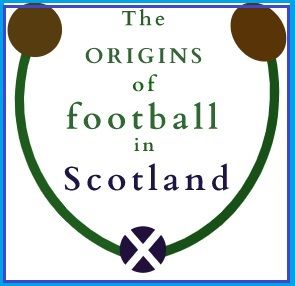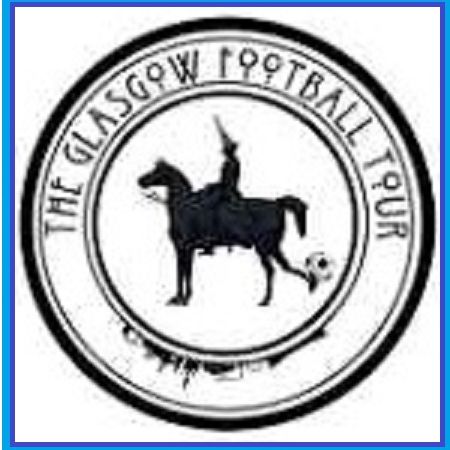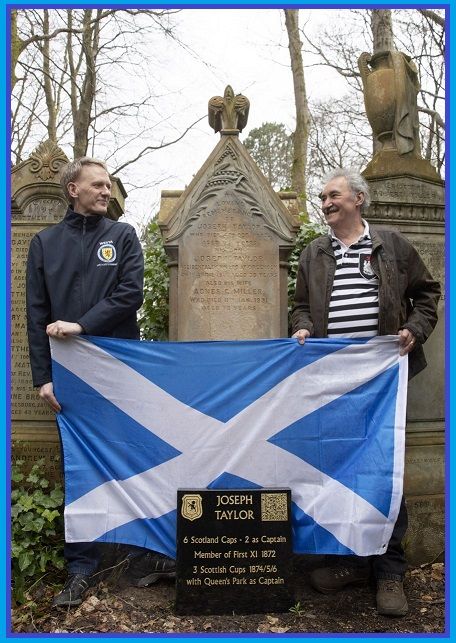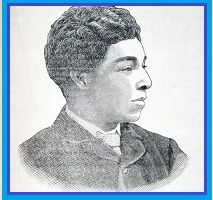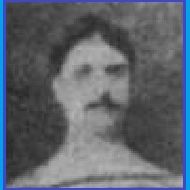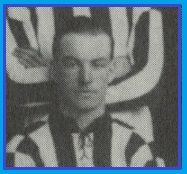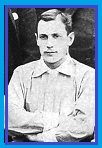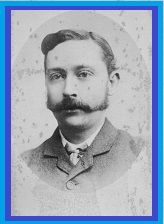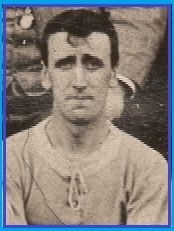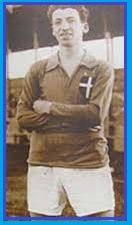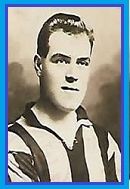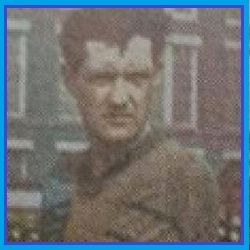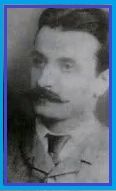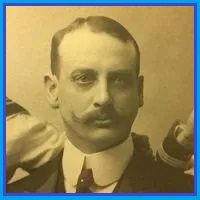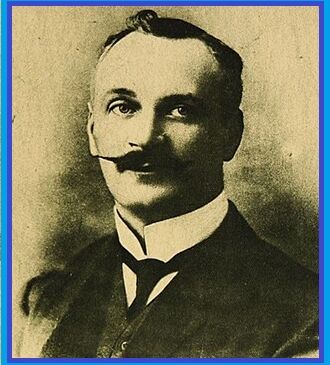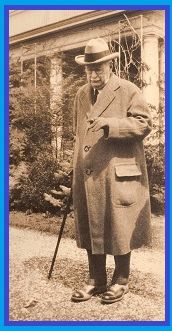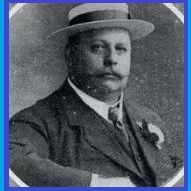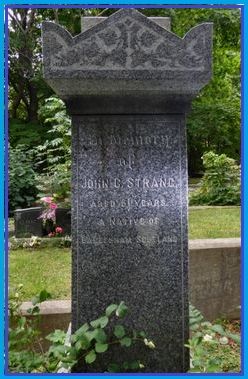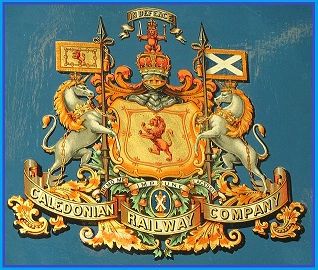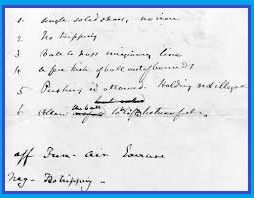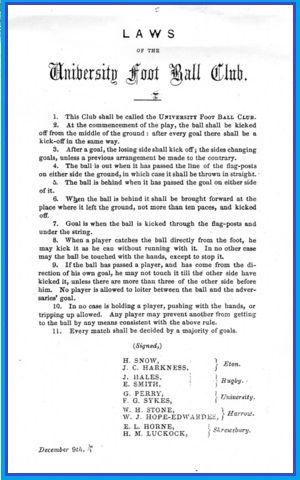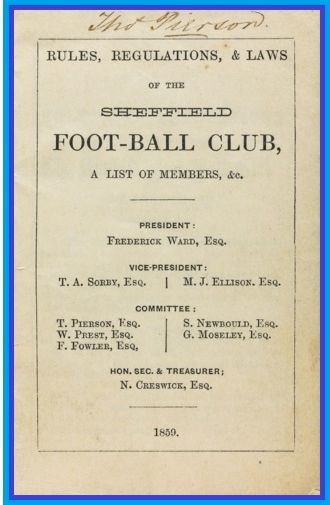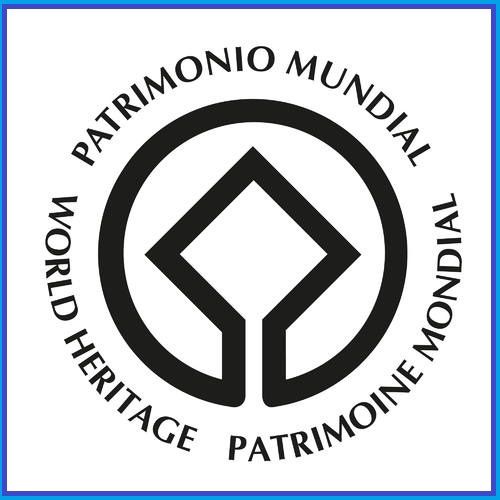The Scots Football Historians' Group
Brand New............ the first in another way of SFHG putting Scots football-history reet!
The Latest "Short, an' tae Feet" Podcast
Bo'ness - Ramsays and Easton, Finland and Chile
For more click on: Podcasts
and now read on.
Please note that this web-site after six months' work concentrated on construction is more or less complete and we are at the checking and editing stage. So for the next wee while as we go through it there will be typos, words missing and bits of unintended gobbledygook so use with the understanding that everything here has been and will be produced voluntarily and in our own, spare time but if you spot something that needs rectifying, let us know. Remember this project is to correct history. We want to hear from youse.

This site is dedicated to the exploration of Scottish football, that is the modern game largely created here, and Scots football, taken to the World in passion, minds and feet by our forebears, largely amateur in the true sense, who in so doing created the beautiful, global game. Our aim is to un-cover and relate the real stories of and backgrounds to this passion for the World game and preserve the legacies no matter what and where globally. We research, spotlight, advocate, mark, preserve and restore, all voluntarily. Now we even comment, so before scrolling on to enjoy or use our content first consider a donation.
----------------------------------------------------------------------
Anwoth
- the oldest, known football ground in the World confirmed!
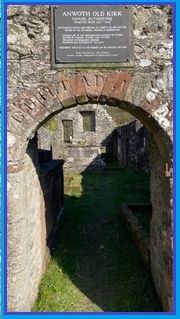
That football, although, of course, not yet the Association version, was played and in Kirkcudbright almost exactly 400 years ago has been known at the very least for almost one hundred and fifty years. The fact, albeit in passing, was restated in 1886 by a J.G. Barbour in his ‘Unique Traditions Chiefly of the West and South of Scotland’, reiterated on-line on The Modern Antiquarian with the original source being nigh on impeccable. It was to be found in the papers and letters of a certain Samuel Rutherford, Presbyterian Minister of Anwoth Kirk, now the ruined Old Kirk, and later a theologian of some distinction at St. Andrew's University, who arrived to take over the parish in 1627 and was appalled to find his parishioners playing the game on the Sabbath.
Barbour recounted the revelation as follows,
"On a level field on the farm of Mosscobin (actually Mossrobin), betwixt the Kirk of Anwoth and Skyreburn village, there lately remained, or may still remain, two large stones which bear the name of Rutherford’s Witnesses.
The reason why such at a name was given stands as follows:- The people of Anwoth, ere [Rev. Samuel] Rutherford was settled among them, had frequently assembled there on the Sabbath evenings to play at football. Rutherford not only denounced this practice from the pulpit, but frequently followed them, and reproved on the spot; he called on the objects around, particularly on three large stones to witness betwixt them and him, that, however they might continue such practices, he had done his duty.
The history of the removal of the third stone is curious. A person employed in building a fence, wished to avail himself of these stones; a fellow labourer ordered him to desist, warning him of the danger of touching such sacred relics; the other persisted, and even jeered Rutherford as a fanatic. He removed one of the stones, and swore that he would remove them all before he broke his fast. In attempting the second stone, however, he fell down dead; or as another tradition says, he was choked with a bite of bread which he attempted to swallow while applying his punch to the sacred stone."
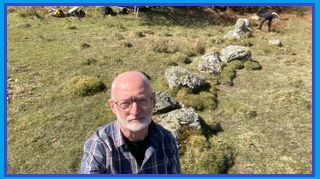
Now the site existed and still exists. The Modern Antiquarian visited it as just such and Barbour's telling or re-telling of the tale, to which can be added that more stones, fourteen in all, were laid, at the behest of Rutherford presumably, across the ground to stop the heinous practice, is fine but today we can do more, much more, now with the emphasis not on folklore but sport.
And that is exactly what Ged O'Brien, one of the founder members of SFHG, has done. He too located and visited the site but has done so with two experts from no less than Archaeology Scotland.
And they confirm firstly that the stone row has neither the form nor the nature of a medieval or post-medieval agricultural feature. Nor has it appeared on historical mapping as having any of those attributes, i.e. the rocks were not intended to mark a boundary, or croplands, or to help pen in livestock. And from analysis of the sub-soil that the stones were indeed placed deliberately across the ground,
“These small interventions showed that the stones were loosely set on an older ground surface and not in cut slots.”
Moreover, soil analysis suggests that the arrangement dates back some 400 years, to very much about when Rutherford voiced his objections.
So what does this mean? It tells us that a form of football was certainly played on a piece of identifiable ground in South-West Scotland two hundred and fifty years before Association football's rules were first compiled in 1863 in London. But it is what the new evidence implies that is still more important. Apart from the ground itself being roughly football-pitch shaped with dimension that are also about those of the small football grounds, on which early Scottish "soccer" was, often by necessity, played, there are the further implications. Anwoth's football was played at least weekly. It meant there was drawing on an established group of players, who turned up regularly. In other words it was organised. It was also known to be on a Sunday with work on Monday. That meant injury being kept to a minimum, which in turn implies agreed rules to avoid such undesired outcomes. They might not have been written down. Who knows if the participants could even write. But they, the rules, were understood. And finally it looks as if it was a summer past-time, because it was played in the evenings and, if we know our weather, a flat piece of ground on top a Scottish hill would in winter be an unplayable bog. Unless, of course, they had early Astroturf!
----------------------------------------------------------------------
In Memory of John McCredy McAlery -
Founder of Irish Football.
An exemplar to us all?
There is little doubt that John McAlery was the pivotal figure in the coming of Association football to Ireland. Off-field he was the initial Secretary of the island's first over-arching football organisation, the Irish Football Association based in Belfast. The Dublin-based Football Association of Ireland would follow in 1921. On-field he was from full-back the country's first captain. But those are the easy facts. He, or rather his life within and outwith football, is rather more nuanced.
The story told of his introduction of the game to the Emerald Isle came after he, already a cricketer with Cliftonville C.C.,, whilst on his honeymoon in Scotland saw a football game, was enthused and as a result was able to persuade two Glasgow teams, Caledonian, itself an off-shoot of a cricket-club and playing at Burnbank, and Queen's Park, then at the first Hampden, to travel to Belfast there to play a match, essentially a demonstration-game.
That fixture took place on 24th October 1878, four days after both teams had successfully competed in the Second Round of the Scottish Cup. It was won by Queen's Park 3-2. And just under a year later there followed the announcement of the opening to membership of an already formed, officially as of the 1st September 1879, Cliftonville Football Club with the Irish Football Association, modelled on the Scottish FA, founded the following year.
It's a nice tale but with a major problem. John McAlery is said to have married Susan Elizabeth Mecredy on the 29th August 1879. If correct the supposed honeymoon was a year early or there was another explanation for the trip across the water. And that might have been business. John McAlery was a draper to trade. He had or would run the successful Irish Tweed House in Belfast's smart Royal Avenue but it seems unlikely it sold only cloth from Ireland. Scottish tweed would also have been on offer and that probably would have been sourced from the very Glasgow cloth and clothing businesses, where Queen's Park in particular had first seen the light and from which still drew players.
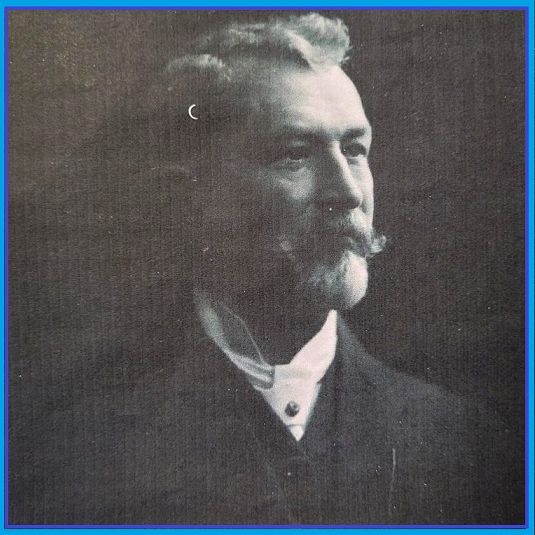
Then there is the question of not the origins but the the age of John McCredy McAlery himself. Some sources have him born, the son of a farmer from Rathfriland in Co. Down, in 1848 in 1849, his mother a McCready, which mutated somehow to McCredy. However, the censuses have his age as fifty in 1901, sixty in 1911 and an obituary seventy-five on his death in Belfast in 1925. He must therefore have been born in 1850 or early 1851, so when in Scotland was already twenty-eight to thirty and on his international debut, thirty-one to thirty-three. It explains his short playing-career.
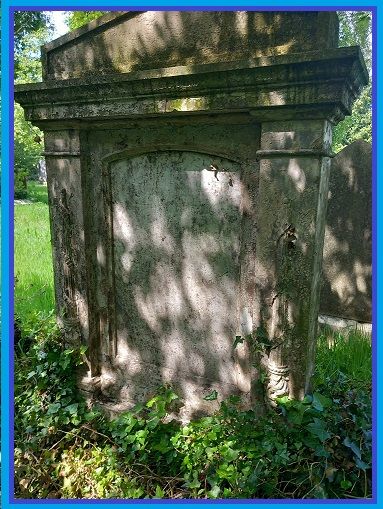
Then there is the question of his wife. She appears to have more or less the same surname as his mother, maybe suggesting marriage within the family. But, as interesting as that may be, what really matters has been the state of his (and her) grave. They are buried in Belfast's Balmoral Cemetery with the stone itself having giving no indication at all of his import to the Irish and World game, its fabric in need of some cleaning and care and the weeds growing at its foot. But that has recently changed and very much for the good.
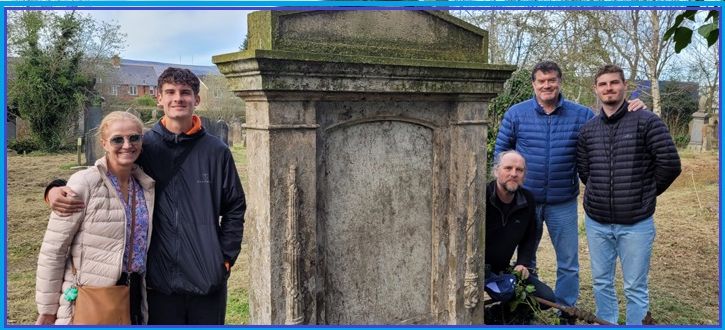
To its credit Cliftonville had not forgotten its founder. In 2014 the reconstruction of its Cage End had allowed its renaming as the John McAlery Stand and the placing of a blue plaque. But it has not stopped there. McAlery's eldest son moved to South Africa with descendants still living there, including in Durban. Contact between the club and them was made with the result that in April this year great, great-grandson, Michael McAlery, his wife and two of their children travelled to Northern Ireland, visiting the club ground, Solitude, and also the now cleared grave.
It has been a shining example of what can be done with commitment, effort and at relatively little cost, uniting in this case club and the Irish Diaspora. It is also one that could be extended with good will to Football Associations wherever; Scotland being no exception. And it also leads to an examination the general state of footballing graves, be they in Ireland, North and South, and, for our purposes, in Scotland too.
Community pride is important to social cohesion, now and in the future. In communities elsewhere, such as in Brazil, Chile, Spain Czechia and elsewhere, it is manifested with not just statues but also long-term and on-going care of graves. In Britain and Ireland, in the four nations that are forever the first incubators of the game there is little or nothing. Resting-places are overgrown, some unmarked, others toppled or crumbling. It is something that we at SFHG have made tangible efforts to change, examples breing Andrew Watson and Joseph Taylor with more to come. Supporter clubs on both side of the border have also done great work but perhaps now from Ireland with Cliftonville and its honouring of John McAlery we have finally at club level an exemplar for at the very least a more respectful and contributive attitude.
----------------------------------------------------------------------
Matter(s) of Fact(s)
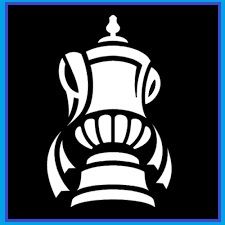
Facts matter and one, albeit bizarrely almost entirely ignored by the Scottish Football Museum, is that our football had a Golden Era. Moreover, it was one, with small blips caused by failed and therefore eventually transient impositions from the SFA re. professionalism and then residence, that lasted fully sixty years. Indeed, just as today almost fifty percent, more in First Teams, of the players active in the English top-flight are non-English for a large proportion of those six decades for non-English read Scots. And the reason we know that is simple counting - in the case of the FA Cup from just a dozen years after its inception in 1871 and the Football League from the day in 1888 that it, on initiation by a Scot, kicked off.
A Cup Run Over
Scots played in the English FA Cup in its very first iteration. At least fifteen of them, four in the Royal Engineer's team that reached the Final plus the eleven in the Queen's Park one that in March 1872 faced The Wanderers in a London-played, drawn semi-final that was not replayed because the Glasgow club could not afford an immediate, second journey south. But that was more or less it for a decade, when in 1882 there were four and half, Arthur Kinnaird and William Anderson for the Old Etonians, the latter Liverpool-born of a Scottish father, and three imports in the losing Blackburn Rovers team; Hugh McIntyre, Fergus Suter and Jimmy Douglas.
But that number was in 1884 to become fifteen or almost seventy percent of the twenty-two on the pitch. That March day Blackburn was involved once more now with four, but this time Queen's Park with a full team was back, having in 1882 re-entered but, probably due to travel difficulties, allowing a First Round walk-over to Grimsby. Moreover, the same scenario would in 1885 be repeated and, whilst the same Scottish total on the Final pitch would never again quite be achieved, twelve being the largest number, on four occasions to 1939 it was over fifty percent, three times before The Great War, once after, on thirteen more occasions it was 30% or more, twelve before WW1, and on nine further occasions, five between the Wars, it was 25% or more.
In total it meant, indeed still means for the record, that from 1884 to 1915 in twenty-one of thirty-two FA Cup Finals twenty-five per cent or more of those on the pitch were Scots-born, never mind the Diasporans, and to 1939 it was twenty-nine of fifty-two, including the remarkable 1937 Sunderland-Preston match with twelve including for the defeated latter Bill Shankly and Jimmy Milne, father of future England international (because he had no choice) Gordon.
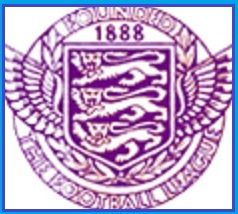
A League of its Own
To repeat, it is said that in today's Premier League non-English, and mostly non-British players, account for more or less fifty percent of the active playing staff. The picture is a little complicated by squad-number rules but is far from a new phenomenon. Just look at the period notably from 1888 to 1915, substitute "Scots" for "non-English" and an almost exact parallel is there for all to see. In fact, just as now with the top-flight of English football effectively unable to function without continuous refreshment through foreign talent, so it was then and in an era when otherwise it, and global football, was after a hesitant start first formed and then flourished (Follow-on next column).
----------------------------------------------------------------------
Scots first started to play in football South of the Border at least as early as in 1865 with the formation of Old Etonians. The first to arrive from the North was Queen's Park's Robert Smith in 1869. By 1876 that number was five, including the first playing for money. Two years later it was ten, in 1881 twenty but by no means an invasion. But as Scotland would repeatedly beat England at international level and Queen's Park reached the 1884 FA Cup Final the number would by 1885 jump from twenty-eight to seventy-six. It is known because that year not only the SFA did a count but we have also done so just recently. Indeed we have to the best of our ability counted and noted the number of Scots playing in the top-flights of the English and Welsh game annually to 1939. In that year that count was one hundred and seventy-six but still only fifty-seven per-cent of what it had been a little over a generation earlier. Peak-year had been 1898-9 with a then total of a staggering three hundred and seven, with all the "Scotch Professorial" influence from north of Hadrian's Wall such an input of talent, knowledge and experience inevitably brings.
But even so the plain figures do not give a complete picture. Whilst, from 1887 and fifty-six Scots players to ninety-six on the foundation the following year of the William McGregor-inspired Football League (FL), totals over a decade were to increase more than three-fold, so had the number of teams. In 1892 the FL had created a Second Division. Then 1894 saw the formation of a one division Southern League and the next season it too had become two. Thus, with in 1891 one hundred and eighty-four Scots in the English game and one hundred fifty-two of them in Football League clubs, it had meant a peak average of twelve per FL squad i.i. half, which admittedly, as the number of clubs doubled, fell before steadying at seven or thirty per cent.
However, it also meant that, like today, some clubs decided on, or for financial reasons could only afford, the home-grown, effectively English-player route, whilst some did not. In 1898-9 in the Football League Sheffield United had no "foreign" players, Wolves one, West Bromwich two whilst, by contrast, Bolton and Newton Heath (Manchester United) had ten, Preston and Arsenal twelve, Newcastle thirteen, Derby fifteen, Liverpool seventeen, Sunderland twenty-two and in the Southern League Tottenham and Bristol City eleven and fourteen respectively. And as for success. Plus ca change.
---------------------------------------------------
The State of Play
a summary, more or less
Attempt 1
That the internet has turned football history on its head there can be no doubt. And here is meant the game in all its variants and not just the Association variety. Moreover, the changes it has brought have encouraged a new wave of researchers, interesting times, not least in terms sometimes of attempts to overwhelm fact with hype, both north and south of the border, and new or newish revelations in the true, the un-covering sense of the word.
And here perhaps the best start is in Scotland and with one of the most recent, for which we have to thank Ged O'Brien (see immediately above). It is not only the contention that in 1627 there was a football pitch at Anwoth by Castle Douglas in Kirkcudbrightshire. As God is witness just such had been suggested from not long after from the letters the then local minister, Samuel Rutherford. But now the disruption by that same clergyman by the placing of a line of stones across it is confirmed archaeologically. So south-west Scotland can fully legitimately claim to have the earliest, known football ground, and by implication the first, obviously organised football, on the planet.
Then there has been the work of Andy Mitchell in so many fields but here assiduously assembling the evidence of the formation of The Foot-Ball Club in Edinburgh in 1824 (see below), its existence until 1841 and its repercussions in that city. It leaves the question dangling as to whether that makes said club the oldest, known football club in the World. Quite possibly it does, but not of course of the Association type, but it does also more or less put to bed the always rather fanciful notion that football generally was a game invented by English Public School (EPSB) boys. It clearly wasn't so in 1824 and it actually wasn't even so as "Soccer" came into being in 1863. The ESPB actually climbed on the band-waggon a little later. Old Etonians only formed in 1865 and perhaps even then and through mostly the efforts of a Scot, Artur Kinnaird, somewhat reluctantly.
And the third to enter the fray recently has been Richard McBrearty of the Scottish Football Museum. He points out two events in 1868. The first is the long-known match between the club that took the name of its first park-venue, and Thistle, In fact it was probably arranged between by Robert Gardner of the former and John Connell of the latter, two of the most important figures in Glasgow and therefore Scottish football of the time. Moreover and importantly, it took place to Queen's Park's version of the London Football Association rules, except that it was twenty-a-side. The second is the match arranged by the Marquis of Queensberry between his Kinmount estate team, Kinmount being by Annan, and an Annan team itself. It was said to be fully compliant with LFA rules; except that it was fifteen-a-side.
Moreover, there appears to be yet another string to this creation-bow. (See below) It comes from an article written in 2002 by John Boyd, of whom we know nothing in addition but would like to know much more. He tells, again from Scotland's South-West, of several games involving a Stranraer team, presumably drawn from the three, perhaps four clubs, operating in the town from at least 1865 onwards. For that was year it travelled to Newton Stewart to play Cree Rovers, a club that is not supposed to exist for another thirteen years. No rules are known, but some must have been agreed in advance, moreover it was organised, because someone bought the train tickets, and more importantly, we even have the Stranraer team and it was 11-a-side.
However, we are still left with one, multiple question and an observation. The former, with regard to Stranraer, is how, why, when and by whom was Cree Rovers, version 1865, formed? The latter is the severe doubt from both Edinburgh and now the towns from Gretna to Galloway cast on what was seen as the bible of the foundation of Scottish football, the 1917-written Robinson history of Queen's Park F.C. and thus the club's role as the source, not of the Glasgow game, but of Scotland's as a whole and its modern iterations like Glasgow's Football's Square Mile. Perhaps the time has come for up-dating, to "G to G - Soccer's Source" or some-such.
And if you think that all of the above is perhaps problematic North of the Border, let's now look south. There they seem to have got themselves into a bit of a fankle about about what is football and dates, its also north/south, so a bit Rugby-League-ish, and not for the first time more about kudos than fact.
Sheffield is in the process of applying for World Heritage Status as the "Home of Football", as if it needed one. It is on the basis that Sheffield F.C., formed in 1858, is the globe's first club, although until 1860, like Edinburgh Foot-Ball throughout its existence and Queen's Park from 1867 to 1868, it was playing against itself. Then it only played 11-a-side from vaguely about 1862-3, about the same time as the also mainly 11-a-side Football Association was formed in London, with by January the Sheffield club joining as one of the only six left standing of that latter, wee group and the Sheffield Football Association itself only founded in 1868. It's all very chicken-egg. Did developments in Yorkshire have, excuse the pun, enough legs to cause London to respond? If yes, why did Sheffield join London and not the other way round? Or did events and experiences in London give the impetus for Sheffield eventually in 1868 to form it own FA? In truth no-one knows and, whilst there might be much bluster, facts are that by 1877 London had swallowed Sheffield, to a good degree because, where intra-national rivalry had failed, London versus Sheffield or vice versa being dull, inter-national rivalry was not, especially for somehow, repeatedly winning Scotland. There, whilst round-ball football of whatever ilk had frankly struggled to the point of near collapse in England's South and done far better in Yorkshire in terms at least of club-numbers, the game North of the Border post-1873 frankly exploded in popularity and has not looked over its shoulder to this day.
----------------------------------------------------------------------
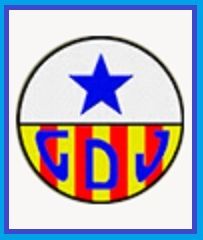
CE Jupiter -
Spain's Third Scots Club
In the Barcelona suburb of Poblenou there is to this day a club that is in essence the still thriving legacy of the short-lived, long-defunct but for the city's game crucially formative F.C. Escoces team of 1899, indeed of the pivotal influence of Scots on its football and, indeed, of standardised officiating, not just regionally but country-wide. Founded in 1909 by two Spanish-born but, through their lace-making and football-refereeing father, Pollokshelds by origin Mauchan twins, David and William, and originally with its own ground in the barrio and a Mauchan at right-half in its first official line-up that club is CE Jupiter. (Incidentally two more elder brothers were Scots-born, one also in Nottingham but in Catalonia all five would be footballers)
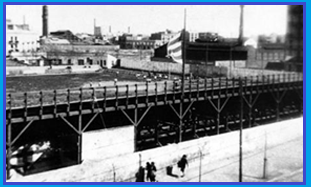
Now the club plays at the local, municipal stadium, with its club office on the corner and ground entrance just yards away.
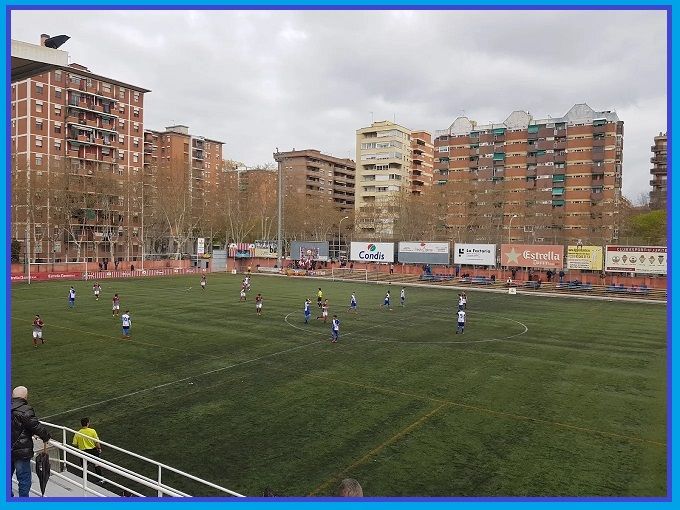
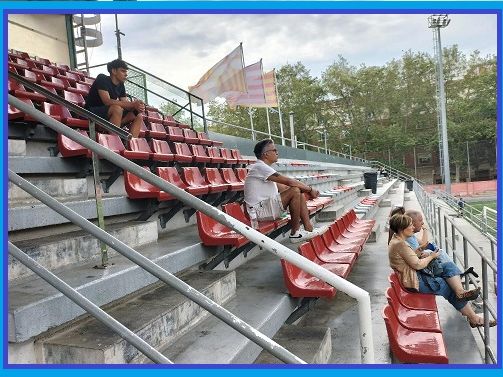
And it serves as the start of a stroll of a mile or so which, should you visit the Catalan capital, will take through what is described now as its Manchester but was much more Newmilns/Darvel, Paisley or even Nottingham, its early economy and thus football founded on first lace and then cotton-thread. The walk itself (click for more details) will lead you past La Escocesa, the then lace-mill and now arts-centre from which Escoces first emerged, a little further to turn down the ever elegant, tree-lined, local Rambla for an outdoor coffee or an horchata or ice-cream from the parlour, then a bar, where the club was formed, and even, should you wish, to the fine, still local Bogatell beach.
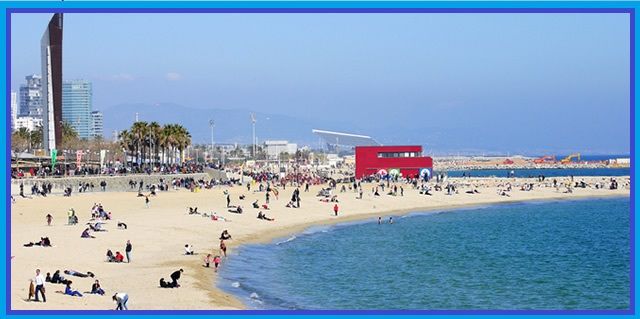
---------------------------------------------------
Stranraer
- and the Coming of Football to Scotland
Perhaps one of the most remarkable stories of the coming of football to Scotland, and one of the least known, is that of Stranraer. Founded officially in 1870 it is the third oldest club in the country. Only Queen's Park and Killy officially predate it and even then there are doubts, for which we have to thank not SFHG research but a unique piece of work, The First Thirty Years, preserved on the Internet from 2002 and by a John Boyd, of whom nothing more is known just yet.
In it he states that already by 1865, two years before Glasgow could even have heard of Queen's Park, Stranraer, The Toon, already had three clubs - Lodge, Sheuchan Swifts, Sheuchan being a main street to this day, and Waverley, Waverley Lane being another - and perhaps even a fourth. Moreover, that same year a recorded game was played, 11-a-side, presumably to some form of agreed rules, away against Cree Rovers in Newton Stewart. It was made possible by the new-fangled railway and was not only with a clearly organised, representative "town" team but one for which we also have the on-field line-up. And that was a dozen years before Stranraer F.C. first entered the Scottish Cup in 1877, to be beaten in the First Round 6-0 by Queen of the South Wanderers, and a three-quarters of a century before it joined the League, with many a game played in between. They included a second early one, in about 1870, as also the three Toon clubs combined, this time versus the 3rd Kirkcudbright Volunteers at Palmerston in Dumfries, and 1875 against Cree once more, for both of which again we have knowledge of those taking part.
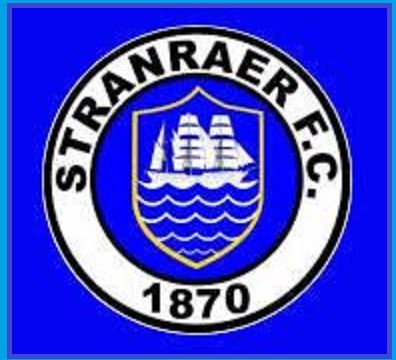
In 1865 in goal was Cluckie. Then there was Warren and Simpson, Bell and T. Alexander. The captain was McQuiston and he was said to be joined by R. and G. Porteous, Craig, Nish and a second Alexander, P. Furthermore, with amazing continuity, Cluckie remained in goal in 1870 as, in the wider team were also Warren and Simpson, Bell, now J.B. Bell, McQuiston, still captain, Nish, the Porteouses, one, Robert. And they eight remaining were joined by Mackie, Fraser and Mckinstrae. Moreover, even in 1875 Warren and Bell were playing on still.
However, between 2002 and now something has changed and that is the explosion of the Internet itself and, more-to-the-point, the availability of resources on-line, notably ScotlandsPeople and similar. It has meant that we can look for and at the names of provided in the line-ups, specifically in the 1861, 1871 and 1881 censuses and for males aged between, say, fifteen and thirty. The results show almost all appear in Stranraer itself and surrounding nearby villages. And some of the names we can even be more specific. McQuiston was twice the captain, none appears on the local record but there is one on Glasserton and it is an Ayrshire, most specifically an Ayr name. So where had he learned the game? The Cluckies and Porteouses were Leswalt and Kirkholm people. And then there is Bell, J.B. Bell, a stalwart of the local game for at least a decade, and here we have perhaps a specific candidate - John Bell, recorded with a middle-name of both Broadfoot nd Bradhurst. He was born in 1848 in Stranraer, so was seventeen in 1865. He became a joiner to trade. In 1871 still in the town he married Isabella Boan, who actually lived on Sheuchan St. at the time, although he gave an address in Glasgow. And it was there in Govan from 1872 that all their five children were born and from where by 1881 they all disappear from the records.
But the question remains, how and why was football, but not necessarily yet the Association variant, played so early in Stranraer and indeed Newton Stewart and Dumfries? Where did it come from? And answer there is as yet none. Unless it, as the Anwoth story (See above) from two hundred earlier tells us, it was and remained indigenous.
In fact the nearest we come in South-West Scoland to any connection is the private work done by the laudible Richard McBrearty of the Scottish Football Museum and posted on his personal blog, The Origins of Football in Scotland. He states that John Douglas, the Marquis of Queensberry, and incidentally father of Lady Florence Dixie, later the first sponsor of the women's game (See below), returned to his Kinmount estate by Annan from Cambridge in 1866. And that same year he set up under Association Rules, Kinmount F.C., which in itself is literally game-changing because Queen's Park by a year then ceases to be the first "soccer" club in Scotland. Furthermore, three more teams, Annan (formed 1867), Springkell (before 1870) and, importantly for the purposes of Stranraer, Dumfries (1869/70) then emerged to join Kinmount by the end of the decade, with games played in 1868 between Kinmount and Annan, presumably to FA rules-ish but 15-a-side, the first at least with the Marquis in the team and scoring.
----------------------------------------------------------------------
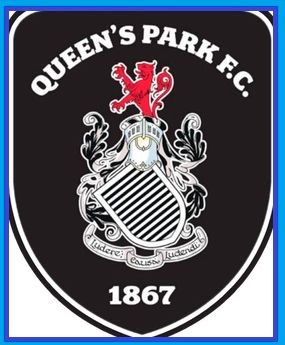
Passing-Off -
Queen's Park & Glasgow's Sheffield Quandary
There is, if you are into proper football history, an interesting spat going on Down South just now with a de facto extension to Glasgow. As you may know, indeed have read here, Sheffield has an on-going campaign for World Heritage status as the home of football, the problem with which is that it tends to play a bit fast and loose with not facts, far from it, but words. When it talks of its "football" it does not mean today's Association game but Sheffield Rules, which can, indeed should, be seen as a stepping stone amongst others, albeit one of the most important, to the modern game, but not more.
Sheffield Rules existed from 1858 until 1877, when it and London's Association Rules had an accommodation with several of the former's regulations being incorporated into the latter's to its great improvement. Sheffield was also the source of the first working-class football team, United Mechanics in 1865, and thanks to an excellent, recent paper from contributors with literally, kudos in the game, academic and expert, it should now be accepted that the Yorkshire city's variant also had positional organisation and passing.
So why the spat or rather spats? First of all there is the Wilson wrangle. Eminent football historian, Jonathan Wilson, a fallible man as all men are, stated some time ago that the passing-game derived from Scotland and therefore post-1871, effectively 1872. Since then Sheffield have expended much heat and light in trying to disprove the claim and have succeeded. Knowing Jonathan a little I am sure he will therefore willingly concede, if for nothing else than the basis of what is the point in having a mind if you cannot change it. But behind the expenditure there appears to be something else - a Tyke frustration even anger with London, writing as a Scot entirely understandable, and the FA, which on the face of it is both an entirely English thing and attempt to replace Southern Anglo-entitlement with its North-English equivalent.
Now, frankly, from a Scots perspective that north and south England are at loggerheads doesn't matter a jot, to which the only thing to be asserted in addition is that, whether from Sheffield or North Britain, as they quaintly used to call us, and like it or not, Association football, Soccer, the game we play today in its earliest form was invented, a result of another spat, in a bar London's Covent Garden. But what Sheffield's researches do cause is a problem not for Scottish football generally but the position of early Glasgow football in particular.
As Sheffield have now been shown to have first used position and passing then it could not have been Queen's Park; unless, with no current evidence of cross-fertilisation, it was a case of great minds think alike, although not chronologically. Sheffield was first. Thus, since Queen's Park has ever since used its "invention" of passing at and as the core of the game as the reason that Scottish football on-field proved superior for the next decade and half, whether it was playing teams from London or Sheffield, that simple assertion cannot be correct. There must have been something in addition, i.e. either Queen's Park did it better, albeit that even in Scotland it and, perhaps worryingly for the SFA and others, Glasgow football more generally had been overtaken within just four seasons and would continue to be successfully challenged so for ten more, or there was another factor. The questions are, what and why with other ideas long available and just as long ignored?
----------------------------------------------------------------------
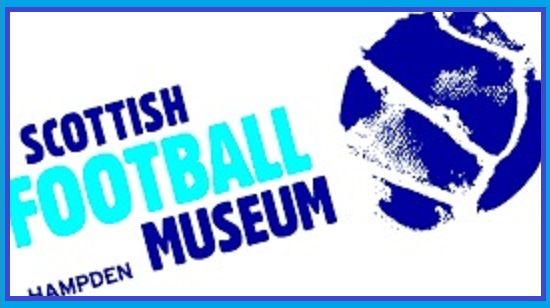
The Scottish Football Museum
what's the plan?
Completion or Closure?
That the Scottish Football Museum (SFM) is a good thing there is no doubt. No country in the World - and this is not an over-statement with the comparisons including England - has a football story as comprehensive and pivotal as ours. Globally "No Scots, no Soccer" is not an idle boast. Indeed the account should be a source of factual pride, if only it were told in full, and by that we mean the Association game from 1871 and the indigenous ones from far earlier still. And here the Scottish Football Museum has much to answer for.
It would be little exaggeration to say that the SFHG was founded in 2022 on concerns about the telling of the history of Scottish football, of football history in general and the role the SFM and ultimately its master, the SFA, have played in both. And those concerns have not gone away. In fact they have in the interim increased, even prompting a recent letter to the Chairman of the museum's Board of Trustees, cc-ed because of not just its national but also international implications to The Scottish Government, to outline some of those worries and to offer help and our expertise in overcoming them. The letter is "pictured" below. To read both pages of it simply download and enlarge in your favourite image editor.
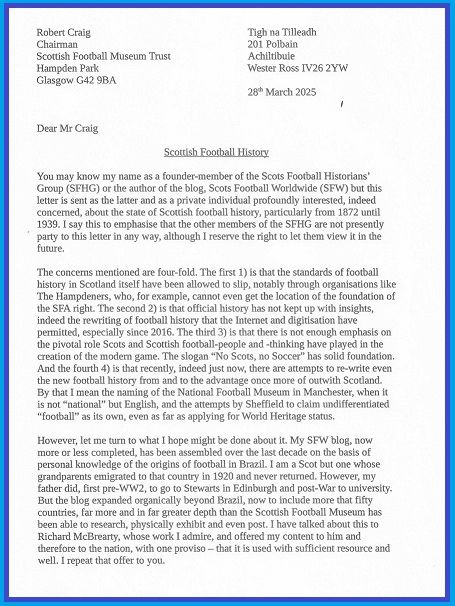
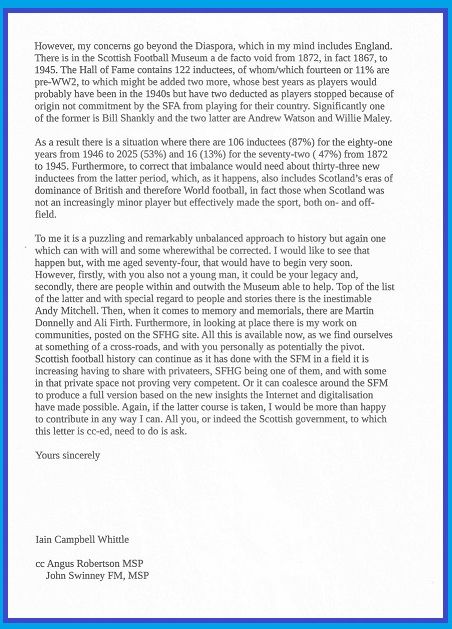
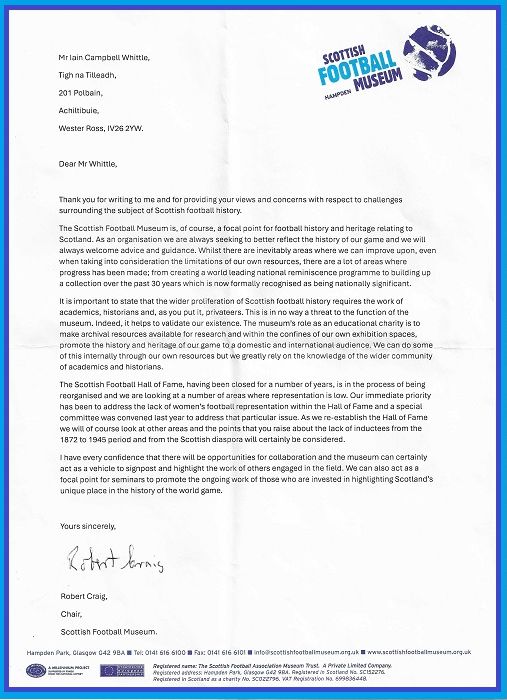
And to the points made in the original letter and the questions posed a very polite reply was received, also pictured. However, whilst it included a laudable commitment to more on the history of the women's game there was no answer to the vexing question of what has happened to coverage of the and then our men's game before the Second World War and most obviously in its Golden Era from 1872 to 1934.
In fact the response in its entirety is more remarkable not for what it includes but what it does not - real investment in the new possibilities digitisation offers to historical study and, in the future, in the scope of the Museum itself.
Which, of course, begs the question, is the real, long-term plan to shut the place, be it to the public or altogether? Certainly, if funding not just for day-to-day but beyond continues to be curtailed, innovative research will be restricted, left to ageing amateurs like us or to perhaps exploitative charlatans. And the facility too will come under pressure with it unlikely numbers through the doors can from Scotland alone be sufficient even to cover costs. But there is an alternative. Scotland gave football, its specific football, the foundation of the modern game, to the World. It thus creates the opportunity not for indifference and certainly not closure, tacit or otherwise, but, where the real thing actually started, for a properly-funded World Centre for Football Research that is not simply following the pretence modern money to Zurich, Lausanne or increasingly Saudi or similar.
----------------------------------------------------------------------
"They say you die twice"
1) Inverness-style
It is easy to lose sight of individual stories in the whole landscape of commemorating those of influence on this site. But the most important point is to remember that each of these people was involved in the world’s greatest game and many, indeed most, were talented enough to represent their country, the dream of almost every school-child and yet almost impossible to achieve.
Whilst the prevailing attitude has always been that players of more recent times and memories are the greats, the field that we are in stretches back to the foundations of the game, and the many largely forgotten players of that era, again many of whom had only a fleeting moment of glory.
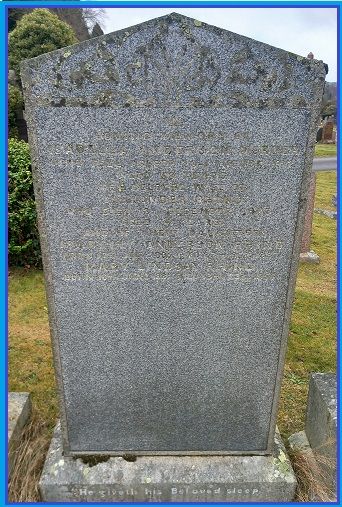
Alex Rhind
This was why on a very cold April morning, I was in Tomnahurich cemetery in Inverness to visit the graves of two local players who are probably unknown to nearly all of the city and yet both have incredible stories to tell. I won’t go into these here as the information can be found elsewhere on this site. The earliest is Alexander Rhind, who only got a single cap for Scotland – there are many players in that category, but his only cap was in the first ever international in 1872. Of course, there is no mention of this on his gravestone and there is nothing in the vicinity to mark it either. The second player is Dr John MacDonald – again, only one cap, but, whilst studying in the Lallands, the first player to represent this country internationally at two different sports, as he had been selected for Scotland at cricket even before his football cap. Moreover, he would become once back in the Highlands a man of renown for his medical career and of great sporting influence locally.
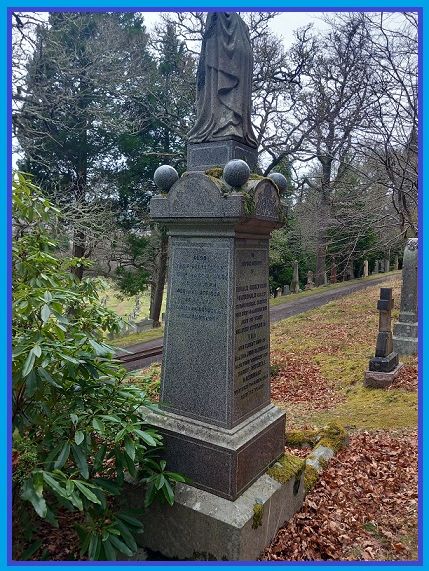
Dr. John MacDonald
So there we have it again – two players with remarkable stories from one place, buried within a five minute walk of each other in graves that show little indication of being maintained and where there is nothing to indicate their contribution to the game to anyone who wanders past. Indeed, the cemetery itself doesn’t appear to have a map anywhere (even online), and there are no signs to indicate what the sections are within the cemetery – is there no local pride in celebrating the achievements of these people?
They say you die twice – once when you pass from the earth, and again when your name is mentioned for the last time – so visiting their graves and writing about them keeps not just the memory alive. (Ali Firth)
2) Belfast-style and Jock Smith
Five players, who represented Scotland are buried in and around Belfast, (as well as four Scottish-born players who represented Ireland, but then they are a different story). Three, Robert Parlane, Sandy Kennedy and John Deakin, are in the City cemetery, with sadly the first two graves, those of the two earliest pioneers, badly unloved. One is not even marked with a stone and is just a patch of grass. Then there is also a fourth in Dundonald; that of Jock Hutton, a player who won ten caps with again the plot in disrepair, although in this case the family know the situation and did plan to tidy it up. And finally there is the last resting place in Roselawn Cemetery of a second Jock, Jock Smith, a Hutton contemporary in football, although they would never played together internationally, and in life. Indeed there is even a possibility that the former, who died in 1973, might have been at the latter's funeral in 1970.
As with all four of the others, more details of Jock Smith's life can be found on this website with it simple enough to say that he lived something of the "dream". Whilst receiving just a single cap it would be in a creditable 1-1 draw in 1924 against England and alongside fellow Ayr United full-back, Phil McCloy. How many times before or since can it be said that there were two players from that club in the national team at the same time?
Now Roselawn Cemetery is the newest of the three. As a whole it is well laid- and marked-out. There is also not much in the way of overhanging vegetation so most of the memorials are in a good state, even with the passage of time. The graves are also easier to find.
And the Smiths' headstone is no exception, even over 50 years since his death, and just over 40 after that of his wife.
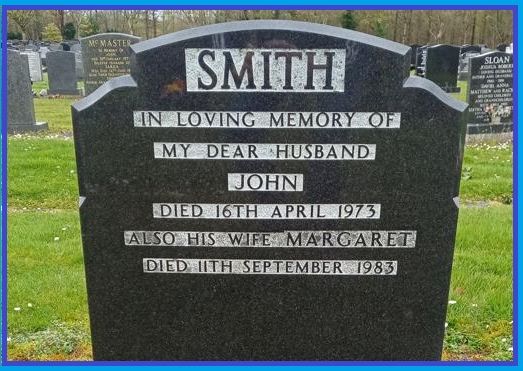
Yet we can't know if anyone else maintains or visits the plot, and so, just because we can, and as we do with others, we continue to place and pay a small tribute to him on the anniversary of his passing.
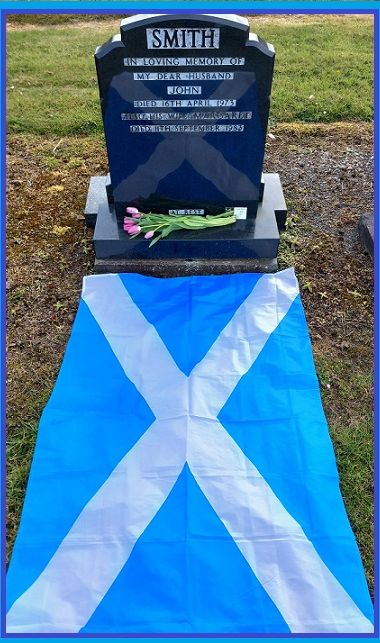
Afterall, they say you die twice – once when you pass from the earth, and again when your name is mentioned for the last time – so visiting their graves and writing about them keeps not just the memory alive. (Ali Firth)
----------------------------------------------------------------------
The MacRaes of Eilean Donan
Feedback is important to a site like ours and in this case acknowledgement and thanks are gratefully extended to Michael Patterson, who read our previous pieces on Stuart MacRae, made contact and now has supplied us with far more information that we could possibly have accessed otherwise.
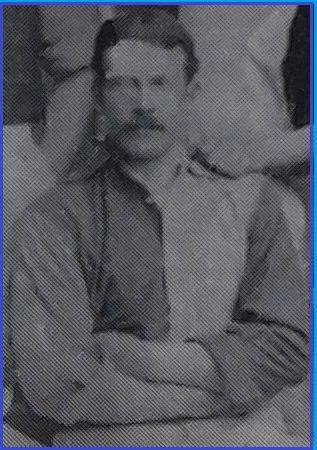
Stuart MacRae - Notts County
(Thanks to Michael Patterson)
So for those not yet in the know, here is a reiteration of who precisely was Stuart and what and who are the MacRaes of Eilean Donan. The simple answer to the question about the man himself is that he was a player for Notts County in the first half of the 1880s, a half-back, who went on also to play internationally. And the more convolut-ed explanation of the reference to Eilean Donan is that his family, as MacRaes specifically of Conchra, was the one that some might say restored and others facilitated the creation of the castle, which since has become iconically Highland.
In fact both interpretations of the story can be said to be true. There was a ruined castle on an off-shore rock in Loch Duich, it lay on the edge of Macrae of Conchra clan territory and the heads of the clan would seem to have the right to do with it what he wished. And that, once he had bought it in 1911, John Gilstrap MacRae, younger brother of Stuart, certainly did or at least allowed architects, initially, again it is said, an Italian one and then George Mackie Watson, to do to great, if not necessarily historically-correct, effect.
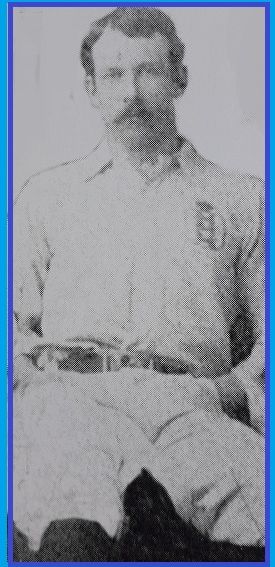
Stuart MacRae in England Strip
(Thanks to Michael Patterson)
But back to the football. Stuart MacRae was a gifted all-round sportsman. He would later be a founder and the first president of Newark Golf Club, Newark being the town where he first entered the beer-malting trade. At the club a trophy in his name is still played for. Moreover, as a younger man, after rugby-only at school in Edinburgh, he seems to have taken to the beautiful game with equal ease. Indeed, having been born in 1855 and with Newark F.C. founded in 1868 and Notts County six years earlier still he was from his arrival in Nottinghamshire in the late 1870s not short of outlets to demonstrate his developing, round-ball abilities. And those skills were even enough for him in 1883 and by then an experienced twenty-seven-year-old to be called up to international duty.
Yet it would not be for Scotland, the birthplace of his parents and their and also his eventual place of burial, the reason being that Stuart had been born in India and until 1887 the sub-continent, indeed the Empire, was "considered" England. It was an interesting concept that continued until in 1887 a change was forced through and by the Irish. However, by then it would be too late, despite our man even being a Gaelic-speaker, a member of the elite Royal College of Archers, since 1822 the sovereign's official bodyguard in Scotland, and as eldest son the heir to clan-chieftainship his father held.
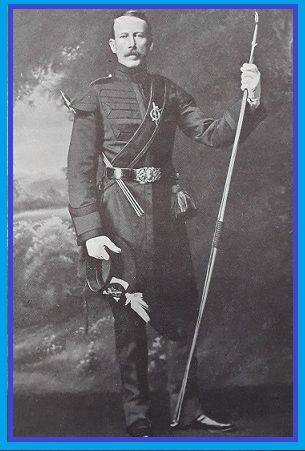
Stuart MacRae -
Member of the Royal Company of Archers and
Clan Chieftain of the MacRaes of Conchra
(Thanks again to Michael Patterson)
However, in purely footballing terms there was still more to come. England as a team was in tactical transition. It had, since being almost repeatedly beaten home and away by Scotland, for a decade tried to ape the Scottish 2-2-6 formation. And MacRae would play in 1883 against all three of the home-nations on the right side of a two-man half-back line. Furthermore, the next in 1884 it continued with the same set-up for the encounter with the Irish but for the one against Scotland there was a change. In it England fielded a three-man half-back line with MacRae now the centre-half. It was not the first time 2-3-5 had been employed at international level. Wales had first used it in 1882. But it was a first for England and both the first and last for MacRae himself. Later that same season he broke his leg and would never play for the "Saxons" indeed the "Sasannaich" again.
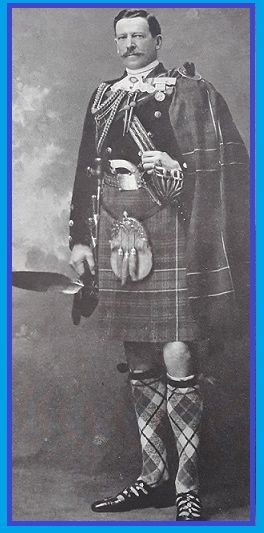
John Gilstrap-MacRae
(Thanks to Michael Patterson)
Stuart MacRae would die in London in 1927, a wealthy man from the malting business he had married into. But that would be the end neither of his nor of Eilean Donan's stories. On his passing his body was carried to Kyle of Lochalsh by train and then overland by his clansmen to the clan-cemetery at Clachan at Duich's loch-head. And thus he would never see completion of the castle. That did not happen until 1932. But at least it was five years before the death in the castle itself of younger brother, John Gilstrap-MacRae, the actual instigator and overseer of the project. He too had been Indian-born, had married the daughter of an English textile magnet but clearly considered himself to be a Scot, indeed a Highlander, as demonstrated graphically by his photo and his burial too at Clachan.
----------------------------------------------------------------------
People-History - Argentina and Iceland
An Appeal for Information
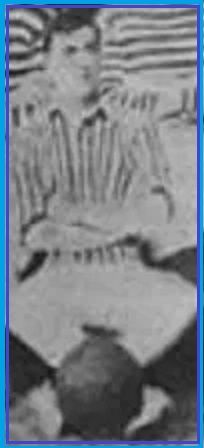
Argentina's Alexander Lamont in 1891
Sometimes paper and on-line research can only take us so far and both early football in Argentina and Iceland are cases in point. In such situations we first reach out to the countries in question for help and it is often forthcoming. But here blanks have been drawn and so we look for other sources both abroad and at home, hence the appeal. What we are looking for is to be contacted by anyone in Scotland or, indeed, elsewhere, who might recognise any of the photos above of Alex Lamont and James B. Ferguson or have family histories that might include either of them and in Iceland a third name, Frank McGregor.
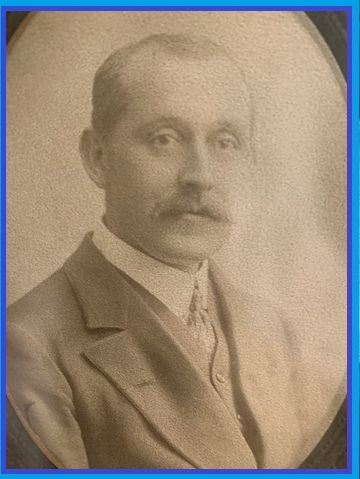
South Africa's Alexander Lamont
Alexander Lamont - the organiser in 1891 of Argentina's first Football Championship was the Scot, Alexander Lamont. He also captained the winner of the competition, St. Andrews (See photo). He was then in 1892 to play mainly for the Quilmes club but in 1893 was still on-field and also Secretary of the league's permanent, second iteration. However, in 1894 he left The Argentine seemingly forever with the possibility that he went first to Brazil and perhaps then to South Africa. An Alex Lamont of more or less the right age died and was buried in Johannesburg in 1927. His family, now in Australia, have supplied the photo above but neither they nor we know much about what happened in-between. Can you help?
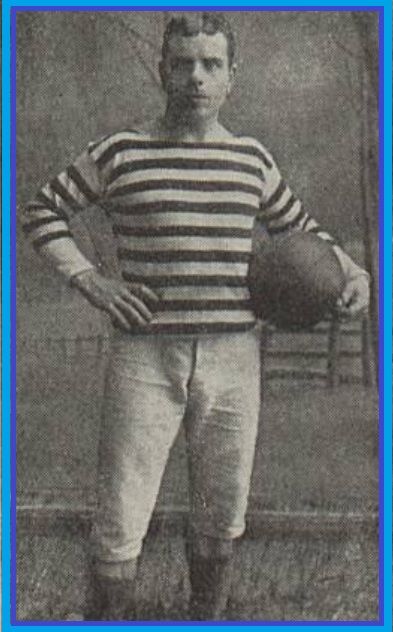
Iceland's James B. Ferguson in 1895
James B. Ferguson and Frank McGregor - football is said to have arrived in Iceland in 1895. It came in the form and feet of James B. Ferguson, said at the time to be aged twenty-two, to be from Glasgow and in Reykjavik, working for a local printer. There is even a photo, football under arm, of him as he introduced not just "soccer" but also gymnastics.
But that is it. There is no hard indication of his story before or after 1895 just as there is none of a second Scot, Frank McGregor, said to be an Engineer and recognised as the founder just four years later in 1899 of Iceland's first football club. KR. Again can you help?
----------------------------------------------------------------------
The Plight of Huelva, Spanish "Mercantalizacion" and a Scottiish Counter
Spanish football has two Scottish clubs - Recreativo de Huelva and Aguilas. Both were founded by Scots and one, Recreo, is in real trouble. It has debts of E20 million (£17m) and would probably have gone out of business the best part of a decade ago but for two measures. The first was that in 2016 it was "expropriated", i.e. removed by law from the hands of commercial owners into those of the city by Huelva Council. The second is that it, as the oldest football club still playing in Spain, the doyen, the equivalent of Queen's Park, was granted a status translated as an "Asset of Ethnological Cultural Interest" (AECI). In other words it was made a national treasure, something that again protects it from what in Spanish is called, with biblical overtones of exploitation, "mercantalisation", what we would call over-commercialisation, but with whatever term is used fans simply side-lined.
And as such it is not without potential parallels, certainly in English football, and to an increasing extent in the Scottish game. Does Dunfermline really have to be owned by two Las Vegas businessmen? How long are they and others going to last in the face of potential, global recession?
However, that is not the story just now and it, with two strands to the tale, does not end there. The first is that other Spanish football clubs are also interested in AECI status. On the list are Valencia and Levante but top and just fifty-five miles away is Huelva's Andalusian neighbour, Sevilla. The United Supporters of SFC have already begun the process and fans of Scottish clubs might take a leaf out of its book, with possibly Historic Scotland and the like the places to start. That is unless football is not culturally high-brow enough. The Minister not of sport but Culture might think about it too, starting not at the top nor in the ever rapacious, big cities but with the wee clubs outwith and country-wide. A Golspie or a Greenock, a Vale of Leven or an Arbroath perhaps.
And the second takes us back to Spain. Earlier this year the commercial company, the one that built up much of the debt, managed to get the courts to reverse the "expropriation", despite the now-released "commercial" president having been jailed for falsifying the club accounts. So, whilst the reversal is not yet a done deal (it will go to appeal) perhaps there is something that can be done here meantime as a gesture of friendship, indeed round-ball fraternity, club to club, even the SFA to club. After all did not Huelva begin with working-class Scots wanting to kick a ball around in exactly the same way as at Forfar, Brora, Stranraer or, dare I say it, Rangers, Hibs or Aberdeen? Moreover, in today's football money E20 million is not a lot of lucre; just an averagely good player or two for the bigger boys.
So the suggestion is that Scottish football find a way a supporting what is effectively its own history by putting out an appeal under the auspices of fellow clubs, those of the SFA, or perhaps even the Scottish Government, to raise the money and gifting it via the city council to what would cease then to be just a Spanish national treasure but become an international one. Perhaps even Scottish football or even Government might see itself to buying the Recreo ground, the Nuevo Colombino, for, say, £17 million, and gifting it to the club in perpetuity or, say, as long as sport continues to be played there. After all, it is not as if there is not a precedent, and a Scottish one too. In 1915 John "Juan" Gray completed the purchase of a piece of ground and with that same stipulation of sport in perpetuity gave it to the club he had formed and coached to invincibility and to the town where he had lived and prospered for the previous decade and half. The land is now El Rubio stadium, a little piece Caledonia in Murcia. That town is Aguilas and Gray was born in small-town Kelso and raised in big-town Edinburgh.
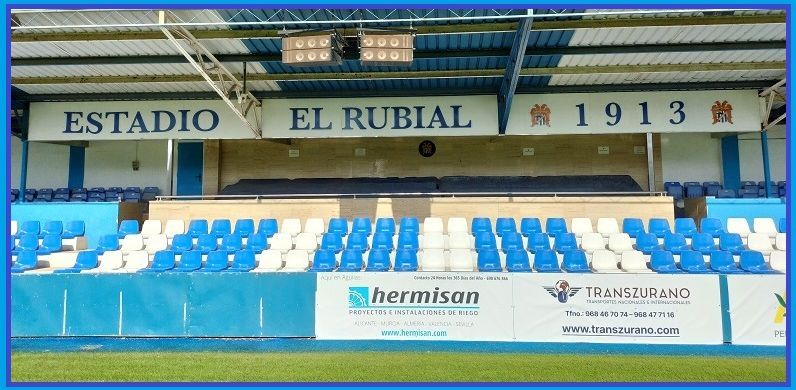
Oh, an alternative thought. Why can't the ones who started all the off by first taking those footballing Scots to Southern Spain, i.e. the Rio Tinto Mining Company, now the multi-national conglomerate, Rio-Tinto, dip into its small-change jar and simply pay the bill. It could look on it as a wee bit of compensation for, well, whatever.
----------------------------------------------------------------------
More Corrections!
The Glasgow Football Tour is a thoroughly good and laudable idea. The city has an outstanding football history and Lindsay Hamilton does a largely great job. So to show our approval just click on the logo below, be taken to its web-site and book up now.
But it would be good, first, not to exaggerate the role of Glasgow to the unnecessary detriment of the rest of Scotland and because doing so, in the end, makes the city as a whole look, well, foolish. And, second, it would be better to get known facts checked and reported correctly.
In a video posted on You-Tube Lindsay walks through the British Cemetery in Buenos Aires in Argentina and to the grave of Alexander Watson Hutton. We know it well and personally. And as she walks she states that AWH was a Glasgow-man. He wasn't. He was born there, but was the child of Fifers and brought up from a wean in Edinburgh. He learned all his football there. She also says he founded the Argentine Football Association (AFA). He did not. The organiser behind it was the same one, another Scot, Alex Lamont, as in the 1891 Association (of) Argentine Football (AAF), the progress of which in 1892 was halted probably only by the death of its president, F.L. Wooley. And as to Alex Lamont himself, he in 1891 had played for the St. Andrew's team, which had little to do with the St. Andrew's school in Buenos Aires but did with the St. Andrew's kirk, which is still there today and thriving. And finally it is said the the AFA is the third oldest league in the World. Once more it is not. The AAF was the third league globally. The AFA is the World's third football association outwith the UK.
Furthermore, in a video short about the origins of football in Sevilla in Spain Lindsay states that Spanish Sevilla Futbol Club is the same as the British Seville Foot-Ball formed in 1890. It is not. The latter lapsed. The former replaced it more than a decade later. And she also asserts that it is Spain's oldest football club, again not so. Formed in 1889 Recreativo de Huelva, is officially the country's oldest club still existing, whilst the first club was the now long-defunct Rio Tinto FC, formed probably in about 1882, when a team from Minas de Rio Tinto, but not necessarily yet the club, played a Huelva eleven, the town and the city, something Wikipedia does not seem to understand, being forty-five miles apart. It was a game made possible by the British Rio Tinto company having employees in both places - mining-town and port - with the two connected by a then newly, company-built railway.
---------------------------------------------------
Davidson and Doig
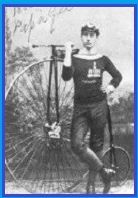
George Davidson, with the penny-farthing, on which he rode to victory. It is now in the Genoa FC museum.
There are few places - villages, towns, even cities - that can boast having been almost simultaneously the birth-place of both a Scotland goalkeeper and the Italian-cycling road-racing champion of 1886. In fact there's only one and it's Letham in Angus. Indeed the footballer and the "pedaller" were born within yards of each other in The Square in the centre of the village, Ned Doig, between nation's sticks from 1887 to 1903, in October 1866 and George Davidson just a year earlier in September 1865. Their births would even be signed off by the same registrar, a Thomas Macbeth. Moreover, both theit
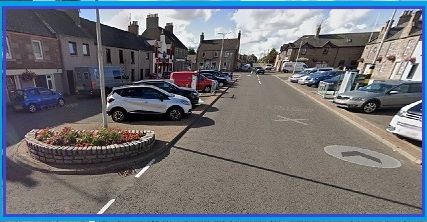
The Square, Letham
mothers were local girls so would have grown up together, this whilst fate would see both their sons buried abroad. Doig would die in 1919 in Liverpool and his grave is in Anfield Cemetery.
Davidson would be interred in the family mausoleum in the Staglioni cemetery in Genoa, he having passed away in 1956, in nearby Rapallo. And it would be with two more, notable feathers in his Italian sporting cap. In 1946 he had founded the Milan-Rapallo road-race, still run to this day and a major part of the country's cycling season. Furthermore, having been
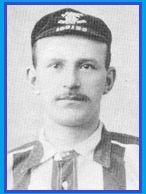
Ned Doig, Scotland's goalkeeper for a decade and a half, 5 caps either side of non-eligibility from 1889 to 1896 due to playing in England.
already on the board for a couple of years, for finding the club's second ground, the old cycling track, in 1913 he stepped up to become President for the best part of a decade of, as it is still officially known, the Genoa Cricket and Football Club. And it would be he who saw the club essentially turn professional and thus more or less force first northern Italian football to follow and, in time, the national game too.
So, with statues of Bon Scott and Peter Pan in Kirriemuir, might not Letham consider something similar for Geo Davidson and Ned Doig?
----------------------------------------------------------------------
Projects
The Joseph Taylor Grave
Restoration work on the grave of Joseph Taylor has been completed. And it and a new, marble plaque were unveiled on 13th April by two of his great-grandsons, Colin and Alex Taylor, in a ceremony at Glasgow's Cathcart Cemetery, also attended by SFHG members. The Daily Record was there too and the following day it published the excellent "Memory of Scottish football legend protected after revamp of historic grave".
More Notable Research and Restoration So Far by Others with SFHG Input
Where others are
From the World's first official football international played in Glasgow in 1872 and the beginning of the Second World War almost six hundred Scots-born players turned out for the national team plus a number who were born elsewhere. Most lived out their lives on and are buried in Scottish soil and one of our aims here at the SGHG has been to trace and track them and their last resting places so that the contributions of as many as possible to our national game can continue to be recognised, honoured, marked, maintained and, perhaps, become places of quiet pilgrimage. To that end we begin with the seven cemeteries/crematoriums, where more are buried or were cremated than any others. They are in Scotland:
But, of course, as has been the way of Scots from all walks of life movement abroad has been frequent and in many cases permanent so trace and track is not confined to our immediate frontiers. Indeed, three English locations stand out as the final resting place, the burial or cremation, of a remarkably large number of our own. Those places are:
To see who is to be found where simply click on the individual resting-place and then, for their personal stories, on the "People" list below.
and here is.....
The dilapidation of the graves of Scotland's international footballers is an on-going problem. In part it is neglect but mostly simply climate and weathering. The only ones to avoid the effects is the small number that are unmarked and deserve recognition. So the SFHG group, mainly through the unstinting efforts of founder member, Martin Donnelly, having already created the most comprehensive listing of the last resting-places of those who represented us on the football-field from 1872 until the Second World War, a list that will be constantly up-dated until complete, has also turned its attention to the dozen most urgently in need of the same. Each will require up to £5,000 to carry out the necessary works and we invite you to contribute. It can be done through the Honesty Box below. |And the graves are:
The Grave Situation
David Wotherspoon, Southern Necropolis, Glasgow, and Billy Mackinnon, Westburn, Cambuslang
- both graves unmarked
- West Kilbride, Ayrshire, condition of grave declared to be dangerous.
- Methilmill, Fife, gravestone unstable
- Lochgelly, Fife, gravestone crumbling
Andrew Richmond, Craigton, Glasgow and John Gow, Cathcart, Glasgow
- both gravestones facedown and therefore unreadable.
Eddie McBain, Hawkhead, Paisley and John Goudie, Hawkhead, Paisley
- gravestones laid flat since last visit.
Willie Berry, Western Necropolis, Glasgow, Bobby Templeton, Kaimshill, Kilmarnock and Tom Jackson, Eastwood Old, Glasgow
- gravestone/cenotaphs in two pieces.
----------------------------------------------------------------------
History
Home and Beyond
First there is a number of thoughtfully compiled and curated Scottish club archives that are always an excellent resource. For a list of those known to us and for your ease of access, click on;
plus, as an attempt to cut through the hyperbole of the over-vested interests, not least parochialism and even blinding nationalism, and to be use in conjunction with,
The Timeline of Association Football
there is our new and always developing,
SFHG Supplementary Football/Scottish Football Timeline
and then, on 30th November 2022 the Scots Football Historians' Group became "live" and work began. The date was deliberately chosen, for two reasons, both symbolic. The first is that it is St. Andrews Day, with Burns Night one of two that are uniquely both Scottish at home and Scots elsewhere. The second is that, as the twenty-second World Cup with its sixty-four international encounters is taking place three and half thousand miles away, precisely one hundred and fifty years ago the first such meeting of footballing nations took place and in Scotland, in Glasgow at the still existing Hamilton Crescent cricket ground. Indeed, although it was a 0-0 draw, the first of many since, it can easily be argued that without that specific game none of what is taking place over a month in the Middle East would be happening at all. Whilst the birthplace of Association Football, forever England, could even then have raised a representative team in a moment, without opposition the game might have withered on a still very slender vine. That it survived is very largely due to a group of eleven young men, amateurs all, a Glasgow-suburbs club team in essence, who were ploughing a very lone furrow North of the Border, which took on the challenge from the South, were expected to be dubbed, with tactical nous acquitted themselves remarkably and instead sparked an explosion in enthusiasm that continues to this day worldwide. Those eleven young men were,
William Ker and Joseph Taylor,
James Thomson and James Smith,
Robert Smith, Robert Leckie, Alex Rhind, Billy Mackinnon, Jerry Weir and David Wotherspoon
and with them the story of the SFHG begins. Over the last few years through the worldwide research of a small number of thorough football historians in Scotland and elsewhere a deeper understanding and therefore an alternative interpretation of the history of the "Beautiful Game", of Soccer has emerged. There is no doubt that Association Football was an English invention, an amalgam of several traditions and codes from various parts of that country. But it was in large measure not the versions, albeit to the same rules, that became firstly that of the working-man and was within two generations taken round much of the World and within little more than a third to the entire globe. That was the then very much pre-eminent "Scottish Game", the seeds of which were actually sown on that day at the very end of November 1872.
We know, through research old and modern, where all of the "Class of 72" were born. They came from a number of corners of our country. We know where all but one of them rest, five in home soil from Cambuslang to Inverness, five like so many of our fellow countrymen in foreign fields, England, the United States, Australia and South Africa. But each one deserves to be properly recognised and physically honoured as a group and individually and that at least in spirit that is what we did last evening. In these modern times where communication is more often than not virtual we all sat down together for the first time and had a dinner to mark the importance of the event of precisely a century and half ago, all those in football that have followed on since and what might be described as our formal foundation. And we did it in the presence of special guests, Colin and Alex Taylor, the great-great grandsons of Joseph Taylor, on the right of the unprecedented full-back pairing in that first Scotland team and later President of the club team that formed it, not the first but arguably the footballing World's most important club team, Queen's Park.
But, of course, The Spiders, its players and Hampden were not alone. There were and have been many other players, officials and administrators, locations and events, individually and which we have linked.
People
Just under six hundred Scots have until the Second World War, the football history, in which we are most interested, played for the national team. These were days when international games took place annually but in nothing like modern numbers. Today Kenny Dalglish holds the record for appearances with 102. But then it was Alan Morton with thirty-one and he had an international career that lasted twelve seasons; just one of the stories that we consider still worth telling. For others, click HERE.
Places
It can never be said that Scots football, that is the game in Scotland, the Scottish game, and the sport as carried by Scots round the globe in head and feet, was a slow burner. It exploded both here and there. Within half a decade of 1872 and one club at home teams were numbered in hundreds and within another five years Scotsmen were playing and, importantly, organising football from Wales to Canada in one direction and China in the other. It was a contagion and stories of its spread are HERE.
Matches
The story of Scots and football, indeed of Scots and soccer more generally, is littered with games literally of pivotal consequence. The Glasgow international of 1872 was just the first. But there would be many others, several of those of the first World Cups to 1950 and in between many more, in Britain and Europe but notably also in Africa and the Americas, both South and North. As we and football historians around the World uncover more and more detail accounts are added to and can be found HERE.
History Trails and Tales
Across Scotland and, indeed, the World the origins and influences of Scots and their football at home and abroad are to be found everywhere. And sometimes they are in concentrations that can be linked to form a series of trails that will lead you both though histories and places that are unique to our and the World game, to us, ours, you and yours.
Scotland
______________________________________________
______________________________________________
(Kinross & West Fife, The Fife Coalfield, North Fife, The Fife Coast)
_______________________________________________
_______________________________________________
The Gareloch to Cardross Trail
_______________________________________________
(Alexandria, Renton & Dumbarton)
_______________________________________________
____________________________________________
(From Eaglesham to Hampden,
Kilbarchan via Paisley to the Clyde
and the Glasgow Southern Suburbs in-between)
_______________________________________________
______________________________________________
The Greenock (& Gourock) Trail
______________________________________________
______________________________________________
(Galston, Newmilns and Darvel)
______________________________________________
(Bellshill, Motherwell, Wishaw, Newmains, Cleland, Carfin & Holytown)
The Diaspora
____________________________
____________________________
____________________________
____________________________
____________________________
____________________________
____________________________
----------------------------------------------------------------------
Fact, Comment and Opinion
Andrew Watson and honouring, pride and sporting friendship
(But not in and from Scotland)
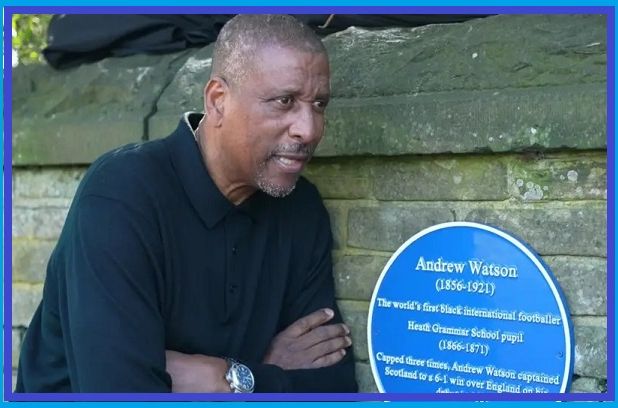

Recently in England, in Yorkshire the ex-England international, Viv Anderson (To quote Off the Ball "What a player he was!") performed the unveiling duties of a plaque celebrating the early schooling in Halifax of Scottish international, Andrew Watson. So far so good, indeed "superb". Pride is important. SFHG did its bit in raising the funds for the restoration of his grave. And it is, of course, more recognition of not just the first Black internationalist but also a Scot, Scotland captain even, and thirty five years before Brazil's Arthur Friedenreich and Uruguay's Isabelino Gradin and Juan Delgado and three years short of a century before Viv himself.
But there are problems. First, the piece by BBC Yorkshire marking the event, click here to read it, and apparently verified by BBC Sport, so the Big Boys, contains eight errors of fact, a couple minor, the others not. So the question is how did that happen? And, second, where in Scotland is an equivalent plaque, the bust or even a statue for an undoubted pioneer of multi-racial sport. And perhaps it is even time to think about two - one in Glasgow and, as a gesture of friendship though sport, some-thing that might be replicated elsewhere, a second funded by the SFA or perhaps our government in Watson's South American birthplace, Guyana.
----------------------------------------------------------------------
So now the SFA doesn't know its birthplace!
God, this is tiresome but here we go. To quote an old friend, Glasgow's Football's Square Mile, "The Lion emblem of the Caledonian Railway can still be seen on Bridge Street: mirroring (sic) the emblem of the Scottish Football Association."
And it is used somehow to create and embellish a connection between a former company building and the SFA's foundation. In fact there is one, a connection that is, but, as precisely explained just yesterday, 13th March, by Andy Mitchell in his inestimable blog, see Scottish Sport History, it is not direct via the railway, emblem and all, but indirect and through a family of hotel and bar owners. the Dewars and a near-by but different building.
However, the result has been that the SFA, through not just sloppy but bad history has been party to a plaque to mark its own formation being put in the wrong place. So the question is quite simply, when and by what or whom might the error be corrected?
----------------------------------------------------------------------
Tales of the Unlauded
If you reading this you are likely to be interested in Scottish football history and this country's leading role not just in the creation of the modern, Association game but its spread globally largely in the minds and feet of our countrymen. Indeed, if today's tele-game is your only interest or programmes of the ilk of View from the Terrace (VT) are your thing, you are probably wasting your time, unless, that is, you want to learn.

So, if you are still with us and reading on, this is the crux of the article. Scotland has a football history like no other country. Frankly, without us it is highly likely there would, instead of a World game, be little or no Association football anywhere. No Scots, no Soccer! Yet the back-story is untellt and the vast bulk of hundreds of players, officials and administrators, literally from labourer to professor, who made it happen remain un-lauded and their stories equally unkennt. Instead we have served to us contemporary dullness, by the Press, commercial television and not least the BBC.
But it is all not for lack by us at SFHG of trying. The papers have been contacted and we ignored. BBC Scotland has been approached with a package of fifty plus individual tales from Argyll to Angus and Caithness to The Borders, tales about your folk and the communities of you as licence-players. Yet, instead you are served VT Shorts and just three endlessly repeated, longer programmes, the story of Andrew Watson, uncovered by us with the funding of his grave restoration also by us, the story of Rose Reilly with her mixture of charm and determination in the face of the flagrant foolishness of officialdom and the Dougray Scott episode, a triumph for his family footballing history but through its historical sloppiness the object of somewhat mocking reaction, not least from Down South.
But it need not be so. If funds from us as volunteers to record them for radio or film them for TV are not available, the stories are. They can be serialised, be tellt, not least if you demand of existing media that they are or we all find a way to produce them for and release them on today's alternatives. Suggestions are invited.
----------------------------------------------------------------------
Villa 1 - Braco 0.1
It may seem to be far too tight a score with the might of an English Premiership club, as it happens, just now and as it was at its start, captained by a Scot, pitched against a wee place in Perthshire. But then it is not a register of goals but current recognition.
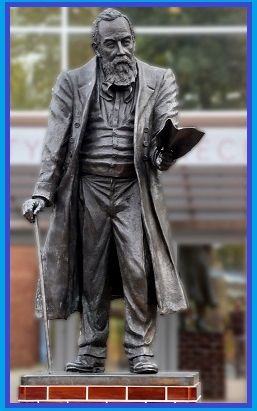
It is fact that Villa, Aston Villa, might well not exist but for the village, or rather a man from it, who first was to save the club financially and then a decade later in 1888 with a simple letter commercially not just make them but every other functioning football-, indeed, sports-entity, professional, amateur and globally, that plays in a league. That man was William McGregor, the son of a tailor, himself a draper to trade, who was born in Braco but devoted his working-life to Aston, to Birmingham, off-field, and never a player, to The Villa, and gave viability not just to modern football but English, indeed World-sport more generally. And for that in front of the Villa Park stadium that he saw first built in 1897 his statue stands rightly and proudly.
However, the result has been that the SFA, through not just sloppy but bad history has been party to a plaque to mark its own formation being put in the wrong place. So the question is quite simply, when and by what or whom might the error be corrected?
However, in his home country and county just now he remains, apart from a small info-sign in Braco's car-park, unaccountably un-lauded.
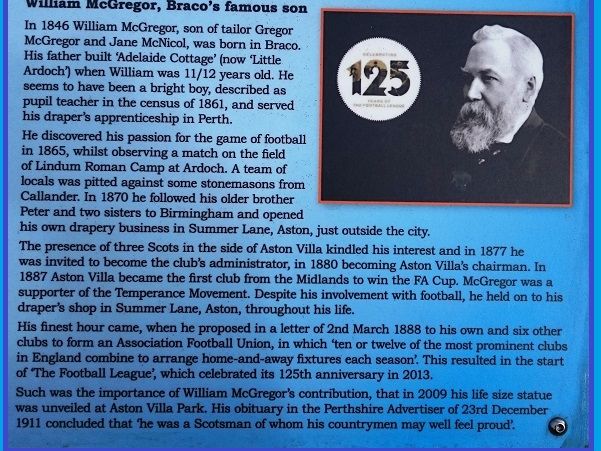
It is a situation that frankly grates, as it also does, with one notable exception, Brazil and Busby's Tommy Donohoe, with regard to the same dearth of recognition of, of pride in the many other Scots, who introduced and/or imbedded football on- and off-field outwith their homeland. However, it also began a train of thought that suggested a cost-effective way of rectifying the situation. If you are interested or just intrigued, click here for more.
---------------------------------------------------
Makem Myopia

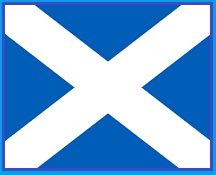
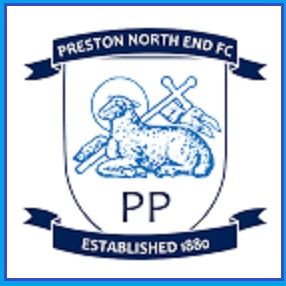
Listening to a very recent, football podcast there was an unexpected remark dropped in in an admittedly joshing yet some-what crowing fashion about a match that took place in 1889. It was played on Wearside on 29th April between a team from the winners of both the first and second seasons of the English Football League, and also the 1888 Cup, Preston North End, and Sunderland AFC, their equivalent from the temporarily rival league, the Football Alliance.
But a bit of context. Preston the previous year with much the same team had lost to the wee village team of Renton, the 1888 Scottish Cup winners, 4-1, and Sunderland would in May 1889 lose to 3rd Lanark 2-4 also at home, The 3rds being the 1889 Scottish Cup winners. So, whilst the Black Cats win over The Lily-whites was admirable, on an albeit rather rudimentary calculation there was a gap for the Scottish over the English of something between two and five goals. Except for two important facts. Sunderland too was a Scottish team. Against Preston it fielded seven Scots. Indeed it had more players recruited from Renton than there were from Sunderland itself. And even against the team from Glasgow it fielded five. Moreover, Preston was also Scots plus some. Nine of its eleven hailed from North of the Border.
In fact the match might be seen as, well, Scotland versus Scotland but with a twist. The Preston players had been recruited from as early as 1884, whilst Sunderland's were fresher meat. And in 1888 football in Scotland had been changed, again through Renton. Thus 29th April 1889 might be seen as the encounter of the old and new Scots game. And the new had won!
----------------------------------------------------------------------
The Absurdity of the Parochial
At the beginning of the month an excellent report on some origins of the beautiful game was put out as a news item on television. It is neat, slick and informative and can be seen just now by clicking on:
https://www.itv.com/watch/news/birthplace-of-football-shares-its-history-in-bid-for-heritage-status/byn6sbv
But it is also disingenuous because it seeks not just to connect but also deliberately to confuse "Foot-Ball" and "Foot Ball" with what we play today, the Association Rules game. The item was on ITV, English ITV. Its source was Sheffield, from where in recent years has come laudably deep and important research on the former locally-played, Sheffield Rules version of the game and now has emerged a campaign for UNESCO recognition of it, seemingly, as the sole place of origin for football in its modern form.
Now it might seem to be dancing on a pin-head but, as the the article above on the SFA not knowing where it started, accuracy matters. So let us try to impart some. There were four stages, all in Britain, to the initial creation of what is today's football.
The first was the local, ad-hoc mass games what we in Scotland called "fitba" but existed throughout these islands. The second was the foundation of the first "Foot-Ball" clubs (note the hyphen) with codified and written rules. There is an argument that this first took place in Scotland in Edinburgh in 1824, lasted until 1841 with one copy of its hand-written rules shown as an example.
Then, third, there are the Cambridge Rules, of which there were several iterations, with the printed 1856 version illustrated. But note two things. First, the iterations did not flow on one from another. They seem to have been separate codification attempts with differing drivers. Second, they were, as illustrated, for a "Foot Ball" club, no hyphen, and again subject to change and addition, not least in 1861 by the Forest Football Club, later to be known as The Wanderers and future five-time Football Association Cup winners, including the first playing.
And finally from 1857 there is Sheffield, where a vibrant club culture developed, it is claimed from 1859 with the publication of its rules but in reality in the next decade with the foundation in 1860 of Hallam, Sheffield F.C.'s first external opponent.
But back to the pin head. "Foot-Ball" and even "Foot Ball" are not "football" as we understand it. They weren't in Edinburgh or Cambridge. And they did not become so In Sheffield either and to pretend otherwise is unhelpful. Not just are Sheffield's printed rules for a hyphenated game but the ITV piece's filming of the ledger of the founder of the first Sheffield club shows it clearly referring to "foot Ball".
So where does this leave us. After digitalisation much good work by many in many places has been done not just to uncover the real origins of modern football but also to sweep aside a number of myths. The fact is that the proto -game in Britain developed in largely parallel in a number of locations in these islands before coalescing. London produced an initial set of rules that stuck. Sheffield added and considerably improved them when it in 1877 it merged with the FA. Scotland, as its results show, provided tactics and technique. That it happened should be celebrated. However, instead there is parochialism and it is absurd. Where we have been allowed by technology the opportunity for clarity and agreement attempts are being made to create new but equally tenuous myths and resentments - North England of South England, Scotland of England and vice versa, even Scotland of Scotland - are not being eliminated but instead reformulated. A halt would be good.
----------------------------------------------------------------------
World-Heritage or maybe just our Heritage?
The logo below is that of UNESCO World Heritage. And currently there seem to be two places vying for it for football, both in Britain and each in some ways laudable. The first, Glasgow, has been on the go for a few years but seems just now to rest in part on spurious facts and, again partially, on incompleteness. The second, newer one is Sheffield. It is better factually but with one major, major flaw. Sheffield Rules football was not our Association game and thus even with good research might just as well be the Swedish variant, Aztec or Chinese.
But that is not to say that the principal of application presumably on Criteria (i), (iii) and (vi) (Click here to view them) is not a good one. Indeed Scotland currently has one in the creation, Scotland's Trail, so there is national governmental will for this sort of project, which should not be ignored and might be harnessed on the basis that not over-covetous South Glasgow but our nation more widely is actually and provably the source globally of much of the "The Beautiful Game".
So on that basis we suggest a new application, Scottish Government-backed, and four marker locations. The first is the Queen's Park open-space because it was where a group of men from the North, Moray and Aberdeen, joined together with men from the South, Glaswegians, to play not just an ad-hoc game but one from which the profoundly influential Queen's Park club, our doyen still, was founded. And the other three needs must be in the Vale of Leven. At Park Neuk in Alexandria, where football as a working-class game began. At Tontine Park in Renton, where modern football with not just attack, defence but now a mid-field, was formulated. And in Dumbarton perhaps aptly right in front of the Citizens' Advice Office that now stands on the site of the tenement where John William "Jake" Madden was born and from where he would play for the town team, Celtic and Scotland before taking himself to Prague, never to return, but do so as the first player turned coach and as such be the pioneer-carrier of the top-flight Scottish game beyond our shores. Indeed so successful was he that his picture adorns the reception of the Slavia Prague stadium, a stand is named for him and there is still an annual pilgrimage to his grave. Those Czechs know how to honour.
And we ask too that all the above might be done with a little humility - Scotland, on-field, is not the footballing force it was for so long - and with taste. Indeed there we have an example. The good folk of Busby have erected in their midst a bust of Tommy Donohoe, one of their own and also of the three takers of football to Brazil, all Scots, by birth or Diaspora. It stands on plinth, subtle in its remembrance and recognition, a model perhaps for similar Unesco-sanctioned memorials; a plinth, a plaque of explanation, a football as a globe and a thistle (See above). And if Unesco show themselves not to be interested then perhaps we can out of simple, national pride do it anyway and before Down South's at very best marginal claim goes further?
----------------------------------------------------------------------
Sheffield in the Birth of Football
There is in Sheffield some interesting work being done on the origins of football. It, that is the game there, began in 1857 with Sheffield F.C., a team, which in a remarkable parallel with Glasgow's Queen's Park precisely ten years later, was until 1860 a team with no "mates" or as we would say, "nae pals".
The work involves delving into the local Press of the time to both seek and find references to combination, positioning and even passing. And they were half a decade before Scotland and two or three years even prior to London and the Royal Engineers.
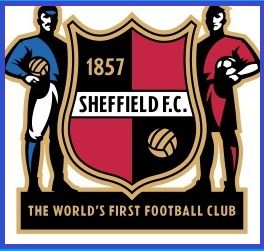
But there is a problem, albeit for them not us. Sheffield, club and city, played to it own rules. It was not Association football. The Sheffield Football Association did not merge into the London equivalent until 1877, admittedly with rules added from the former that were so superior that they persist to this day. But it was done from a position of weakness. For all the start it had had in development, when the two codes first crossed in 1873-4 in the FA Cup Sheffield F.C. did not get beyond the Third Round, effectively the Quarter Finals, was walked-over in the First Round the following season and was defeated in the next, 1875-6, again in Round Three, but this time after two walk-overs in its favour. And this was whilst, when their vanquishers and eventual Cup-winners, The Wanderers, later faced, in the November of the year, their Scottish equivalent, Queen's Park, the result was for the English team a 0-6 defeat at home. Nor was it a lone example of increasing Scots Association superiority not just over English teams but Sheffield ones specifically. A month earlier again Queen's Park had defeated Notts County and in December would do the same to Cambridge University, with the previous April Clydesdale having already rolled over Sheffield Wednesday and Alexandra Athletic Sheffield Albion and both Scottish teams being well down the then Caledonian pecking-order. The latter had been knocked out of the season's Scottish Cup in the First Round, the former in the Third, both by the Hampden club. Thus it is clear the potential was for Sheffield, with its twenty years in the game, to learn from Scotland with five and not the contrary. The questions are, on both sides, why.
----------------------------------------------------------------------
Also see for a wider range of SFHG analysis:
A Caring, Perhaps Saving Critique?
We at SFHG like a trail. Just scroll down and you will find twenty-eight to be explored virtually or physically as you wish, albeit the reach is so extensive that one is in Ireland, two in Continental Europe and two require crossing the Atlantic.
But there is one closer to home, in Glasgow, created not by us and which, we suggest, requires a little, threefold attention. It is “Football’s Square Mile”.
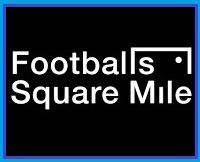
The first point of contention is after the welcome its invitation to “explore the origins of passing-game”. There is little evidence that either it or even passing itself was first employed there. The latter is recorded first in Sheffield and then from Chatham before the Association game fully arrived in Scotland in 1871. And the former did not really emerge until the early 1880s and then with as much likelihood that its very much still-Scottish source was on the banks of the Dunbartonshire Leven as those of the Clyde.
The second point is a little pedantic. Football comes in many forms and they had as many origins. What we are talking about is the Association game aka Soccer and a little precision might ensure that amongst others Irish Gaels, Americans, Canadians and some Australians will not be rubbed up the wrong way.
And the third is that more than one of the sites spotlighted might simply be wrong in content or location, including where a plaque has been placed. And don’t just accept our pointing towards potential inaccuracy. It’s borrowed. The concerns comes from an impeccable source. It suggests that at a minimum in Site 1 the wrong birth-date of Alex Watson Hutton has been posted, to which might be added that of the almost thirty years AWH spent in Scotland twenty-seven, including his learning of the game and the meeting of both future his wives, were in Edinburgh. A better object of Glaswegian adoration might be John Harley, creator of the Uruguayan style of play, who was born five hundred yards from Cathcart Cemetery and brought up within a mile of it. Moreover, in Site 2 the wrong building is claimed to be the birthplace of the Scottish Football Association. Indeed a plaque is said to have been placed (on a lamp-post?) when it should be on the other side of the road. And the source says there is more. We await developments with interest.
So with all this in mind there can be two responses from the Square Mile, batter on regardless or accept scrutiny, cooperate, correct and even add. Generally there were many more contributing clubs than just Queen's Park and Third Lanark. Specifically, Site 5, the Glasgow Necropolis, is the also the final resting place of James Richmond and Don Siillars, both Queen's Park and Scotland players in the early days of the game. Are they not also worth a mention? Similarly Site 8, the Southern Necropolis, contains the grave of David Wotherspoon, one of Scotland's very first eleven and which, as we have reported (Scroll down and see below), is unmarked. Perhaps some money might be found from the SFA or elsewhere and used to change that for perpetuity. And Site 21, Cathcart Cemetery, contains not just seven graves of import but is the burial-place of ten more former internationalists with neighbouring Linn Park having seen the cremation of a further nine. All equally deserve honouring. Our man, Martin Donnelly, can help in every case. Consult him and not only will the history then be both right and augmented, as it would be by the addition of our Southside and Southern Suburbs Trails, but, with Glasgow’s football looking to be gain UNESCO World Heritage status, embarrassment by omission, even international mockery through error might be avoided by the city, its authorities, the SFA and also not re-percuss on non-Glaswegian, football-following Scots more widely. Think on.
______________________________________________
A Hampdener Rebuttal
Hyperbole can certainly be fun. It can also be good but inaccuracy can be the former but not the latter. And so it is with our national game.
On the front page of the web-site of The Hampden Collection, one which otherwise serves an extremely valuable function in spotlighting the contribution Glasgow, central and south, made to early Scottish football, (also click on the map to view) the following claims are made:
“this (The First Hampden Park) is where the ‘Scotch Professors’ developed the modern passing, running and combination game, and exported it to the world.”
Not one of them is true, so let’s examine why and in something of reverse order.
That Scots took essentially today's football to much of the World, indeed starting with England, is correct. It is documented, see for example:
But they were not Professors of any kind with one notable, future exception, Alexander Meiklejohn of Pawtucket, USA who in fact was born in Lancashire but only because his family briefly passed through on the way from Neilston to Rhode Island. In fact in the beginning to England the carriers were largely miners, factory-workers or labourers barely out of their teens, for whom what football they had learned in perhaps two or three seasons at home might offer a slightly better-paying alternative in the short-term and at best perhaps a pub to run in probably a Lancashire mill-town in the long. Nor did they come through Hampden. Of the seventeen Down South in 1880 not one had played for Queen’s Park. Of the 20 in 1882 it was twenty and again none again and in 1884 it was seventy-four and, you guessed it, none again. And even of those going in the same period further afield, either temporarily or for good, there were only two, one to China and the other to Chicago. In fact, whilst football was first played by our countrymen in initially Australia, then Canada, the USA, Uruguay and Argentina and beyond it was by enthusiasts from home and even Diasporans bitten by the same bug, who probably knew of the Queen’s Park club, called their own teams after it but had never seen Hampden in their lives.
Then there is the twofold problems of this game developed in Glasgow’s expanding Southern Suburbs being, first, “passing, running and combination” (PRC) and, second, “modern”.
Modern football, I would contend requires not just PRC but tactics i.e. deliberate organisation and three effective on-field elements to match; attack, defence and mid-field. Attack was always there. The ethos of the clubs that in 1863 formed the Football Association was it all-out. Organised defence came in Association football in 1872 in the first international and through Robert Gardner. A mid-field of sorts appeared in 1878 in Wales at club level and at international level in 1882 and 1883 with 2:3:5, the only problem being that in spite of it both Wales and England kept being beaten by Scotland and its traditional system. Only in 1888 did that change as Scotland adopted the domestically-sourced Renton model, got thoroughly gubbed but persisted and was able after a few seasons and other impediments to work it out even as its export had already begun, and this time through players with the maturity actually to know what they were doing. In 1887 81 Scots were playing south of the border. In 1898 it was 270.
And so finally we turn to PRC itself. No kinds of football have been sports that did not involve running. The assertion that it came from Hampden, Scotland or anywhere else is simply foolish. As to passing and combination there is evidence from elsewhere, namely in Sheffield-rules football, that they were in some way employed perhaps six and certainly two years before even the formation of Queen’s Park, never mind the acquisition of the First Hampden, the only counter to which is that it wasn’t the Association game. But even then there are still problems. Combination is documented as being used even in Association football by the Royal Engineers as early as 1869 and passing by 1870. Scottish football essentially started in 1872.
And there is more. Whatever was played in Yorkshire or Chatham might have involved passing but was still not the “passing…. game” and here there is for the Hampdeners a proper problem. There is no real evidence that such a thing was employed by Queen’s Park in the first half of the 1870s - "passing" itself is mentioned only in the report of the 1874 international and then with "close-dribbling" - but every evidence that it was a decade later. So what happened in between? Whatever it was it probably had little to with The Spiders and therefore their ground or grounds. The team went into significant decline from 1876, knocked out of the country’s major competition, the Scottish Cup, in the quarter-finals in 1876-7, in the third round in 1877-8 and the quarter-finals again in 1878-9, before starting a major recruitment drive that seems to have involved “tapping up” players from other clubs. There are several examples, not least Andrew Watson. And meantime as emphasis on passing seems to have grown another club ruled the roost and needs must therefore be considered the most obvious source of the trend, its players even recorded not just as employing but scoring from it in the 1877 game against England. That team was Vale of Leven from Dunbartonshire’s Alexandria so nowhere near Hampden, not even from elsewhere in Glasgow but way outwith the city altogether.
______________________________________________
Folk
Robert Reid - Chile's Penultimate Piece
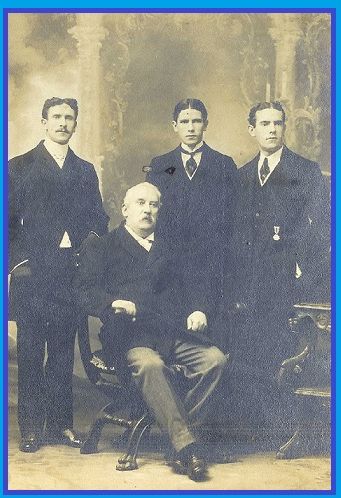
They say good comes to those who wait and in this case there can be no argument. Of the founders of the Chilean Football Association, essentially of football in Chile there were no known photos of two of them, Honorary President, Peter Ewing, and Treasurer, Robert Reid. But for the latter, born in Ardrossan, that has now been turned on its head. A 1905 picture of him and his three sons, the youngest of whom in 1917 make the ultimate sacrifice at Passchendaele, it taken in Argentina, has come to light. And we also know the man, who a decade earlier in Valparaiso first held the city's new game's purse-strings, on retirement came almost home. He returned to Scotland but settled in Glasgow, dying there on Cambridge Road in 1919, a widower following the passing of his wife, Janet, there also in 1915.
----------------------------------------------------------------------
Adam, Mackay & Recreativo de Huelva
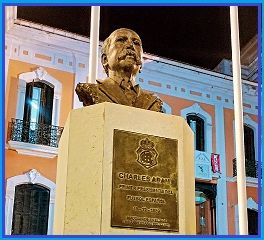
The bust of Paisley's Charles Adam in front of the Casa Colon, Huelva.
The oldest club in Spain still in existence and playing, the doyen of Spanish football, the exact equivalent of our Queen's Park, is Recreativo, founded in 1889 and by Scots in the Andalusian port-city of Huelva. And it knows how to celebrate its origins. In front of the Casa Colon, a building from that era and still at the centre of the town is a bust on a plinth. It is of Charles Adam, its first President, the Chairman of the then local gas company, who gave land for the first ground. However, that he is not forgotten there in is direct contrast to Paisley where he was born and brought up.
And then there is the man at the root of the club's foundation, William Alexander Mackay, who arrived to tend to the medical needs of the growing, British population brought to the city by ore-mining, found time over the best part of forty years to minister to the locals too and for whom sport meant health for all. And minister was right for he was the son of the manse. Born in Lybster in Caithness, he retired to Ross-shire and is buried at Logie Easter by Invergordon with in neither place anything to mark him or the impact he had in Southern Iberia before many even British clubs had come into existence.
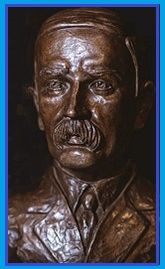
The bust of Lybster's William Alexander Mackay given as an honorarium by Receativo de Huelva, the club he founded and of which Charles Adam was the first President.
But Recreativo de Huelva know how to honour. In a gala held in December 2023, indeed the William Alexander Mackay Gala, to those it deemed worthy was given as the club's highest honour an inscribed bust of the man himself.
Johnny Madden
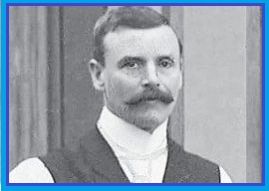
One hundred and five years ago this man, Johnny "Jake" Madden left Scotland for Prague never to return. He went as the Dumbarton-born, ex-hometown, Celtic and Scotland player and he became in the Czech the "grandfather" of the Slavia club, its trainer and servant for not far short of fifty years. As such he was the first top-class player, once the boots were hung up, to take his footballing, indeed Scottish footballing skills, long-term beyond Britain. For what he did in and for Prague he is honoured to this day. At the Slavia ground a stand is named for him. A mural-portrait dominates the club-reception. And even in death in his adopted home he is clearly remembered. Slavia, Celtic and Dumbarton colours proudly adorn his still well-maintained grave. It is worth a visit just to see what can be done if there is a will, because in the town of his birth there is zip.
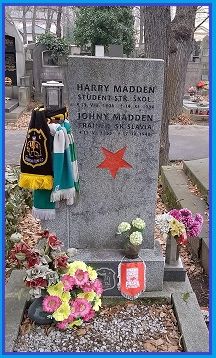
Johnny Madden grave in Olsanky Cemetery Prague. He is buried with his son, see map.
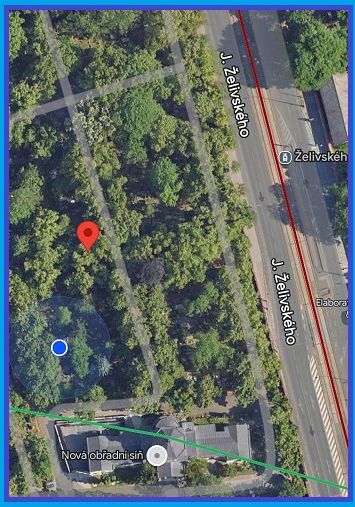
----------------------------------------------------------------------
As the "Lawman" is laid to rest,
Roddy Forsyth's Tribute to him

A young man sits at his desk in the offices of Aberdeen County Council, meticulously drawing a plan for a bin shed which is to be constructed behind a housing project. It is 1958, the young man is 18 and he is living the dream – of being an architect. His name is Denis Law and he knows he is lucky to have his job, because he suffers from strabismus, a condition in which one’s eyes face in different directions, and his employers were dubious about his suitability until they asked him to attempt a test drawing which he accomplished in tidy fashion.
Had this scenario really taken place, our record of Law would be confined to dusty files in a municipal archive. “I used to draw street plans in my school jotters,” he told me over a beer in Rapallo when we were covering Scotland’s participation in Italia 90. “It was a real thing for me. I loved playing football but it didn’t seem like something I could do for a living.”
However, the trajectory of a lifetime can be diverted by seemingly innocuous circumstance. In Law’s case, it was the fact that Archie Beattie, brother of Andy, the manager of Huddersfield Town, happened to be in Aberdeen to visit a relative and he chose to take in a youth game while in town. Although he thought that Law was an unlikely looking prospect, Archie was struck by his skill on the ball and recommended him to Andy, who was sufficiently impressed to offer the 15-year-old a contract and pay for an operation to correct Law’s vision.
The rest is legend.
Law had now embarked on the construction of a unique career and the lines and angles which he would master existed, not on graph paper, but in the unfolding drama of football contests, where he would establish himself as the greatest player Scotland has produced. That must inevitably be a partly subjective judgement but it assumes significant weight when it comes from the most successful manager in British football history.
"He was the best Scottish player of all time,” said Sir Alex Ferguson, on hearing of Law’s death at the age of 84, last week. It is January 2025. “He was a fantastic player. He epitomises Scotland, fighting away, having a fight in an empty house. He was an incredible human being."
The statistics of Law’s career reinforce Ferguson’s call. Law made his debut for Huddersfield at the age of 16 and at 18 he won the first of 55 Scotland caps (at a time when far fewer international matches were scheduled than nowadays), in a British Home Championship victory over Wales at Ninian Park, where he scored in a 3-0 win.
His tally of 30 goals in 55 Scotland appearances remains a national record, equalled only by Kenny Dalglish over almost twice as many games – 102 in total. Dalglish, the only other player to vie with Law as best Scottish footballer, said upon hearing of Denis’s passing: “Others can have their opinions but, for me, he was the hero.”
Law also racked up a portfolio of club records by scoring 18 hat tricks for Manchester United – in the modern era Wayne Rooney is tops with 8 - and he netted 46 goals in 1963-64, a tally which remains unsurpassed at Old Trafford. That season he was named European Footballer of the Year and he is still the only Scot to have won the Ballon D’Or. The iconic image of his scoring feats was of Law’s ability to appear stationary in flight when heading the ball and punching the air with his jersey cuff gripped inside his fist whenever he found the mark.
That said, Law was possessor of one distinction which rankled with him for the rest of his life. He played in the Scotland side battered 9-3 by England in the Home Championship encounter at Wembley in 1961. As a Scot, living and working south of the border during England’s triumphant World Cup campaign five years later, he was the butt of many taunts and famously – or notoriously, depending on your allegiance – played a round of golf on an otherwise deserted course while Alf Ramsey’s players secured the trophy against West Germany.
His painful recollection of the 1961 fiasco was only partly exorcised by Scotland’s 3-2 victory at Wembley in 1967, England’s first reverse as world champions. Law wanted badly to inflict a much heavier defeat but could not dissuade the equally strong-willed Jim Baxter from cavorting around the pitch, socks rolled down to his ankles, playing keepie-uppie rather than inflicting humiliation by helping rack up an emphatic score.
A factor not usually mentioned in Scottish accounts of the event was that – in those days before substitutes – England played with only eight effective players because of injuries sustained during the match by Jack Charlton, Ray Wilson and Jimmy Greaves. At half time the Scots led 1-0 from a Law strike and in the dressing room he beseeched Baxter to devote his energies to the infliction of tangible damage by way of goals.
“Jim wasn’t bothered,” Law recollected 30 years later. “He was just saying, ‘Aye, aye, right. We’re taking the piss out of them.’ We could have scored at least five that day.”
The following year, the immortal triumvirate of Law, Bobby Charlton and George Best propelled Manchester United towards a European Cup triumph. Law, though, had to sit out the victory over Benfica at Wembley because of injury. Meanwhile, Scotland’s failure to reach the finals of either the FIFA World Cup or Uefa European Championship for 16 years after 1958 kept him off the stage of the major international tournaments.
He did make a single appearance at the 1974 World Cup finals against Yugoslavia, in the 2-0 victory over Zaire, but he was clearly past his peak and the game marked the last outing of Law’s international career, prior to his retirement from football the following season.
His strongly developed individualism had been in evidence when he chose to play, at either end of his career, for Manchester City, having been idolised between times by the Manchester United faithful as ‘King of the Stretford End’. It had also motivated him to sign for Torino in 1961 when wages in Italy far exceeded the pay scale of English clubs, but the ingrained defensive negativity of the Italian game frustrated Law to the point where he walked out on the club and returned to Scotland until Matt Busby paid £115,000 (a record fee at the time) to bring him to Old Trafford.
When his playing career came to an end, there was speculation that Law would go into management, but the suggestion was never entertained by those who knew him well. When the eminent Aberdonian journalist, Jack Webster, suggested to the Aberdeen vice-chairman, Chris Anderson, that the club should bring their native son to Pittodrie as manager, Anderson replied that Denis could not organise a tea party, far less a football club.
Instead, Law became a football pundit, principally for the BBC, and I had the immensely enjoyable good fortune to work with him at three World Cup finals and many domestic and European games involving Scottish clubs. We could not walk a street at a Scotland game abroad without him being beseeched by the Tartan Army for autographs and pictures and he invariably complied with good humour, although I once saw the combative side of his nature surface when a supporter tried to take a photo of him in a hotel urinal.
The intrusive fan was left in utterly no doubt what would happen to his camera if he took the snap – and retreated prudently in hangdog fashion.
The most poignant feature of Denis’s later years was the affliction of dementia, that curse of far too many players who thrilled us with their ability to head a football.
But on the positive side of the balance sheet of achievement, Scottish dialect has given us the perfect description of Denis Law, as he was perceived during his predatory peak as the country’s highest scoring striker. He was gallus.
The definition of gallus is a perfect ABC of his character and talent - adventurous, bold and cheeky. Denis Law was a gallus law unto himself.
RIP the Lawman, architect of football fantasy.
----------------------------------------------------------------------
Lady Florence Dixie
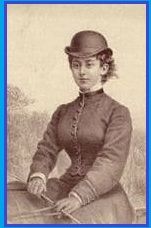
In 1895, as Lord Kinnaird, President of the FA, and William McGregor, founder of the Football League, Perthshire-men both, controlled English football so Dumfries-shire's Florence Dixie nee Douglas became first President of the again English-based British Ladies FC, the World's first women's football club. As such she added to her already pioneering work as traveller, female war-correspondent and writer the health and well-being of women through sport, see The Ladies' Game and Roddy Forsyth's article, Lady Florence Dixie. At her married home in England she is honoured with a plaque. At her birthplace here in Scotland there is as yet nothing to recognise her and her role in the beautiful game. With your help that can be rectified
And read Roddy's piece on"Lady Florence Dixie, women's football pioneer"
The Brazilian Scot(t)s

The smiling face above is that of Archie Scott. He is a Brazilian, who lives there in a suburb of Sao Paulo. But he is also a great-grandson of Tom Scott, one of three men to have taken football at much the same time (1894) to South America's largest nation, in his case to Campinas and Jundiai in Sao Paulo state. Nor is it coincidence that all three were Scots, Archie's forebear born in Glasgow but buried in said Jundiai or even that his grandfather and great uncles were also pioneers of football in Sao Paulo itself. For more detail click here with more to come.
----------------------------------------------------------------------
plus:
John Harley
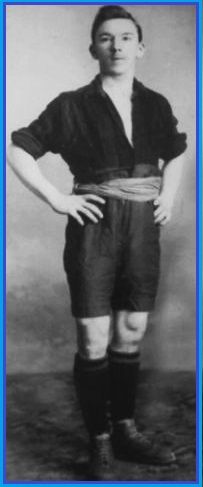
There is a small part of Scotland that is forever Uruguay. It is in Cathcart, a few stones throws from our national football stadium, Hampden Park, and is the birthplace of one of the most important figures in international football. In South America he is known as "El Yoni". Here it was simply John or Johnny Harley. But it was under his influence that his adopted country developed its style of play, one that in the 1920s took it to successive Olympic Gold Medals and in 1930 victory the first World Cup. His contribution to the World game deserves our recognition hence:
______________________________________________
Place
The Belfast City Cemetery Tour
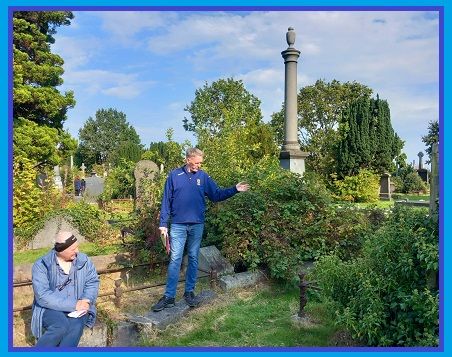
Recently, SFHG member Alistair Firth, along with local historian Peter McCabe, conducted the inaugural tour of graves of prominent footballers in Belfast City Cemetery. There are many footballers of importance buried within the huge Victorian cemetery – ranging from Scottish internationals (including Robert Parlane), Scottish-born Irish internationals (including Bob Morrison), Irish internationals (including their first goal scorer and those who played in the first British Championship against Scotland in 1884) and Scottish players who influenced the local game (Marshall McEwan).
A number of people who attended were very knowledgeable about the history of the game and there was a lot of interesting debate during the tour. It is hoped that the feedback will stimulate further interest in future tours and that another one will be written for Dundonald Cemetery later in the year. It is also hoped that we can get interest in the tour as an event for the delegates at FootyCon25 which takes place in June2025 at Windsor Park. Any monies raised will be used to fund future grave restoration and maintenance. For more information contact Ali Firth.
----------------------------------------------------------------------

Pride in Place
There is in what is now a part of Rio de Janeiro this statue. It alone is a dozen feet high, golden and clearly of a footballer, whose left boot is placed on a globe on the country, from which he came, Scotland, and his right above Brazil, the country, to which he went and from which he never returned. The player is Tommy Donohoe, who was and remains, exactly a century after his death in 1925, a figure of immense local, civic pride. The whole monument, thirty feet in height and standing in front of a shopping-mall that was once the mill, in which he worked for thirty-five years, is always pristine.
And such has been the impact of the man of gold that word spread back to where he was born and bred, Busby in Renfrewshire. Indeed, it proved enough there also to inspire not a statue but a bust, not a dais but a plinth but an again a civic reaction like no other in this country, so far at least.
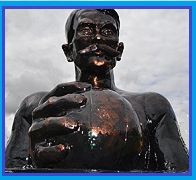
But Bangu is not a wealthy place. Much of its population packs itself onto rickety trains morning and evening to work in Rio city. In that it is not unlike modern Busby. However, its fate has not been to be folded into Glasgow's somewhat gentrified Southern Suburbs. It is sprawling, suburban Brazil, even somewhat shanty. It is also post-industrial. The textile industry that had brought Tommy there has gone elsewhere. In that is it little different to many Scots town, where there was once everything from coal and steel to thread and lace and much in-between. But its does have passion in its past, the people of that past, in a game that those people brought with them and implanted, indeed enough for them first to invest serious money in honouring memory and for Busby, to the tune of £40,000, then to be lifted up by the same wave.
Nor is Bangu alone in recognising the importance of Scots-based memory. In Santiago local football enthusiasts make an annual pilgrimage (See article immediately below) to the graves of the Ramsay family, all five of whose sons were born in Chile and played football in its capital, with three instrumental in the foundation there not just of clubs but also officiating. But in Bo'ness, where their father, Alexander, and their mother, Jessie Frew, grew up, boy and girl next-door, little or nothing seems known of them nor, no fault implied, is there recognition of George Eaton, the also local taker of the game to Finland.
And then there is Prague. The outside of the Slavia Prague stadium is clad with pictures of some of it great players, its foyer lined with murals of the greatest of them all and one other, the Scotsman, for whom a stand is also named, seen and known as the "grandfather of the club. He was Johnny Madden, another to leave and not return, and in 1905 the first elite player turned coach to take the Scottish game, indeed THE game, abroad. Moreover, his grave at the city's Olsany Cemetery is the object also of pilgrimage by supporters of the Czech club and others notably Celtic. But in his town of his birth and that of his first club, Dumbarton, there is as yet nothing, more's the shame but again not blame. It, indeed it and Bo'ness are just two locations of a number where, perhaps more Busby- than Bangu-style and so for a relatively small investment, civic pride might be created in person and place, where it would not go amiss and there is currently nothing.
----------------------------------------------------------------------
Aguilas and El Rubial
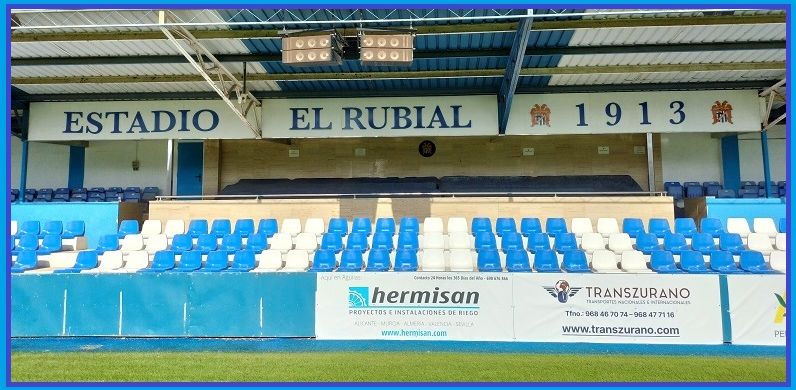
There is one football place in Spain that is forever Scotland. It is the beautiful El Rubial, all blue and white for a reason, the oldest football ground on the Iberian Peninsula still in use and the Murcian home currently of Aguilas F.C..
And the reason for the connection is John (Juan) Gray, born Kelso, raised in Edinburgh but for thirty years a resident of the Spanish town, as well as founder, funder and trainer of its first two, undefeated teams.
The Chilean Founders
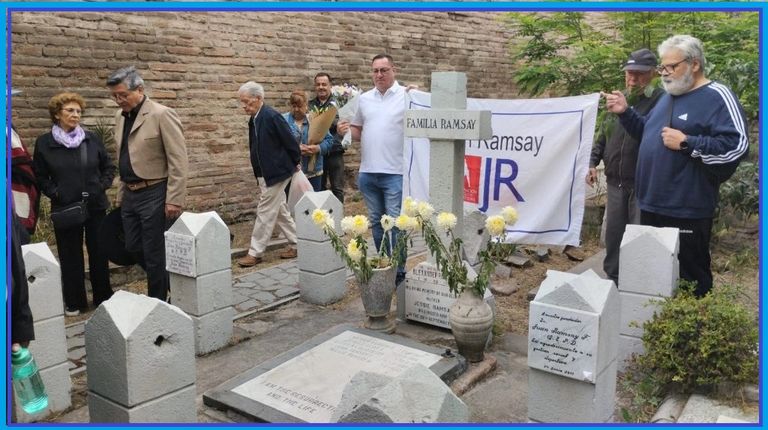
Four Scots families took football to Chile, the Scotts, the Gemmills, the Reids and the Ewings to Valparaiso to found the Chilean Football Association in 1895, a second generation of Ewings and the Ramsays a decade later to lay the base for the game in Santiago. Each year the Ramsays are honoured for what they achieved with pictures of the celebration supplied by Our Man in Chile, Sebastian Nunez Mardones, Yet neither they nor any of their compatriot contemporaries are lauded in their home-land, although their origins are known. Nor are they alone with the question, why not?
______________________________________________
Thinking and Thinking-On
and again if you find this site interesting and use any of its content, please remember that both research, plaques and particularly preservation and restoration do not come free,. So, if you can make a contribution generally via founder member, Alistair Firth, to SFHG funds rather than a specific appeal, one commensurate with the value you have extracted from our work so far, then do not be shy.
Alistair is pictured above on the left, holding the flag with Joe Taylor's great grandson, Colin Taylor, on the right. Account details are to be found here by clicking on:
____________________________________________
SFHG Aims
- - to continue, aid and enlarge the research done by us and serious others on the Scots contribution home and abroad to the World game and post it here on-line, a site which, as our own time allows, we are constantly building.
- - to honour on-line and in the media with biographies and articles by us and significant others and wherever possible physically, at home and abroad with plaques and restorations, those many Scots who have made important contributions at all levels to that same World game.
- - in Scotland itself to encourage the exploration by all those with interest of Scotland's remarkable, indeed pivotal, global contribution to that same World game.
To do this final one we began with the creation of a series of virtual, footballing trails, The History Trails, and, within some, community Rambles, Strolls and Drive-Throughs, that can be followed on foot or by car just as we have done. See above.
And finally we hope that our work will catch the attention, as it has already again both at home and abroad, of still more descendants of those same contributors, and encourage them to come forward to accept proudly the accolades due to their forebears.
______________________________________________
____________________________________________
______________________________________________
Other Recommended Sources
Scottish Sport History
If there is one there is one web-site that has been an inspiration for what the SFHG is trying to provide, comprehensive research into fitba', our football, at home at abroad, it is Andy Mitchell's Scottish Sport History. Since 2012, so for more than a decade, he has produced a veritable stream of impeccably accurate articles and books on many aspects of Scottish sport and Scots in it. It is he, for example, who rediscovered the grave in London's Kew of Andrew Watson. And, although he is not a member of the SFHG, he is seen by us with regard to football as very much a "fellow traveller". So, if you have not done so, please visit his site now by clicking below on:
Andy Mitchell's Scottish Sport History
And we avidly recommend you purchase his definitive Who's Who of all the players, who represented Scotland from the first International game in 1872 to the start of the Second World War. See, buy and read
And there is more.............
For up to two decades a small, dedicated group of enthusiasts has worked away largely without the recognition they deserve compiling data on both Scottish senior and junior football, male and female. They have delved into every aspect of each - clubs, games, players, crowds, trophies - and it is equally available to all for use, support and admiration on:
The Scottish Football Historical Results Archive
plus there is the ever-growing Scotland the Grave, the work of SGHG member Martin Donnelly, with other members Alistair Firth and Mandy Higgins and other chipping in, its records the final resting places of those who have played for the Scotland National Team.
https://www.facebook.com/ScotlandTheGrave/
and the esteemed historian of football in Sheffield, Steve Wood, has, amongst his wide range of excellent research, books etc., posted this self-explanatory video, How Scotland United the Rules of Football. Click on to view. ______________________________________________
See also a book of interest that is not Glasgow nor even Central Belt:
"36-0: The story of John Petrie and the Arbroath men who made world footballing history."
Contact
And perhaps you also have more information to add or personal stories to relate. If so, please contact us on:
E-mail: contact@thescotsfootballhistoriansgroup.org
Or outwith Scotland you might like to pass on that information or perhaps put a question to a reputable historian in the country in question. If so, please see our list of Associate Members.
______________________________________________
© Copyright 2022-2025. All rights reserved/Todos los derechos reservados.
Any use of material created by the SFHG for this web-site will be subject to an agreed donation or donations to an SFHG appeal/Cualquier uso del material creado por SFHG para este sitio web estará sujeto a una donación acordada o donaciones a una apelación de SFHG.
We need your consent to load the translations
We use a third-party service to translate the website content that may collect data about your activity. Please review the details in the privacy policy and accept the service to view the translations.
